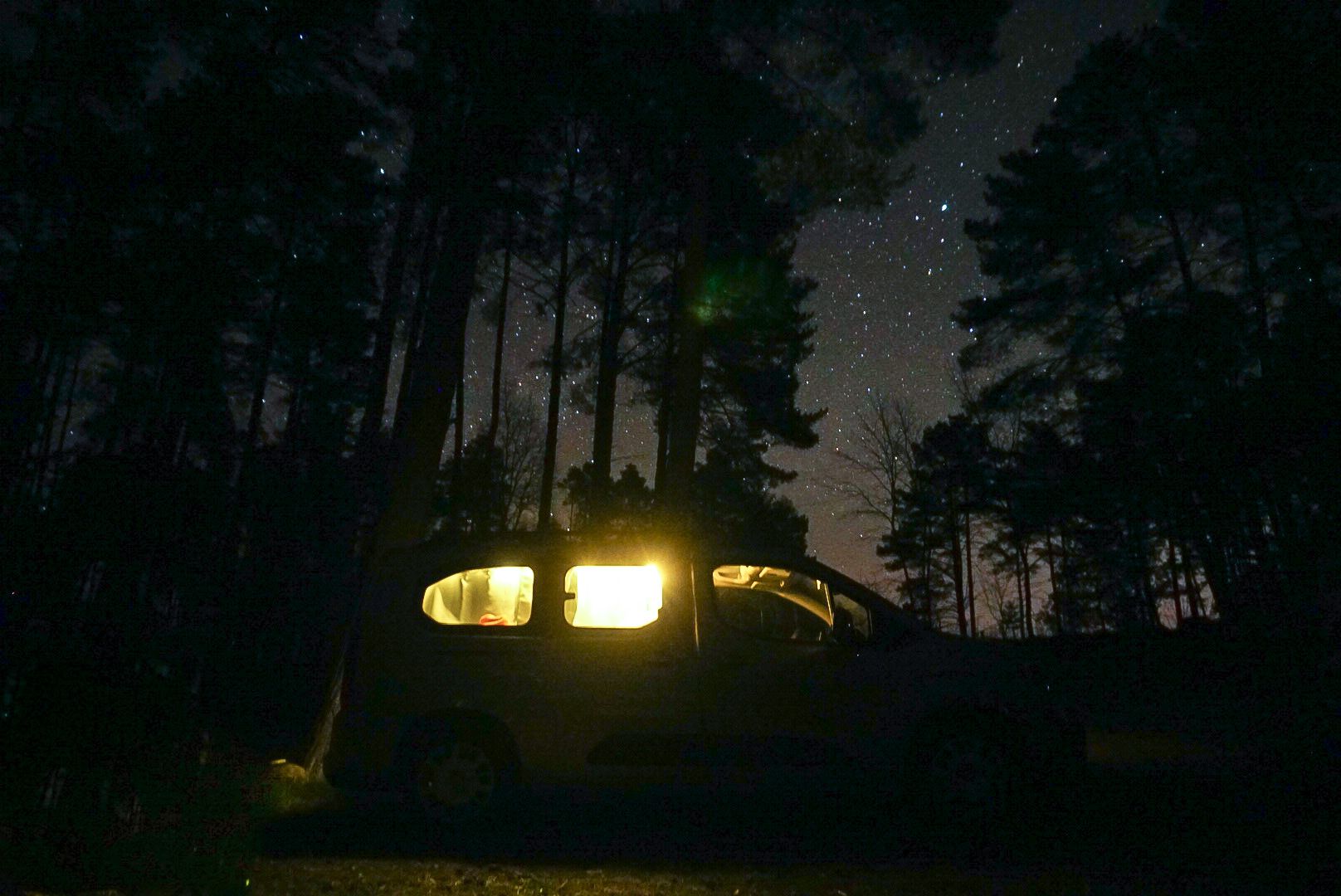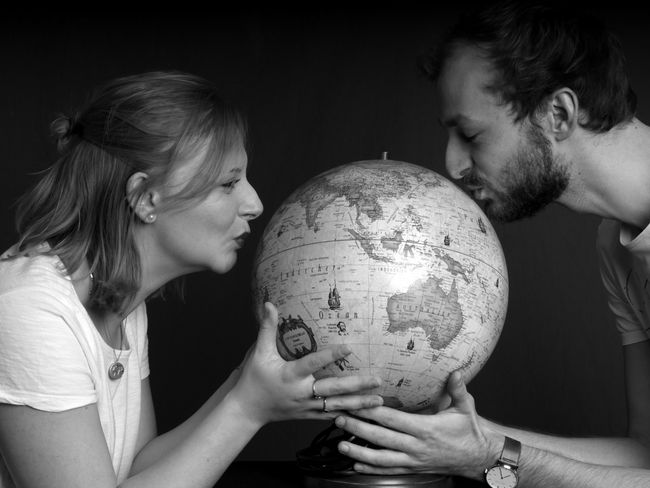KwaZulu Natal: On safari in Hluhluwe iMfolozi Park and iSimangaliso Wetland Park
प्रकाशित: 07.03.2023
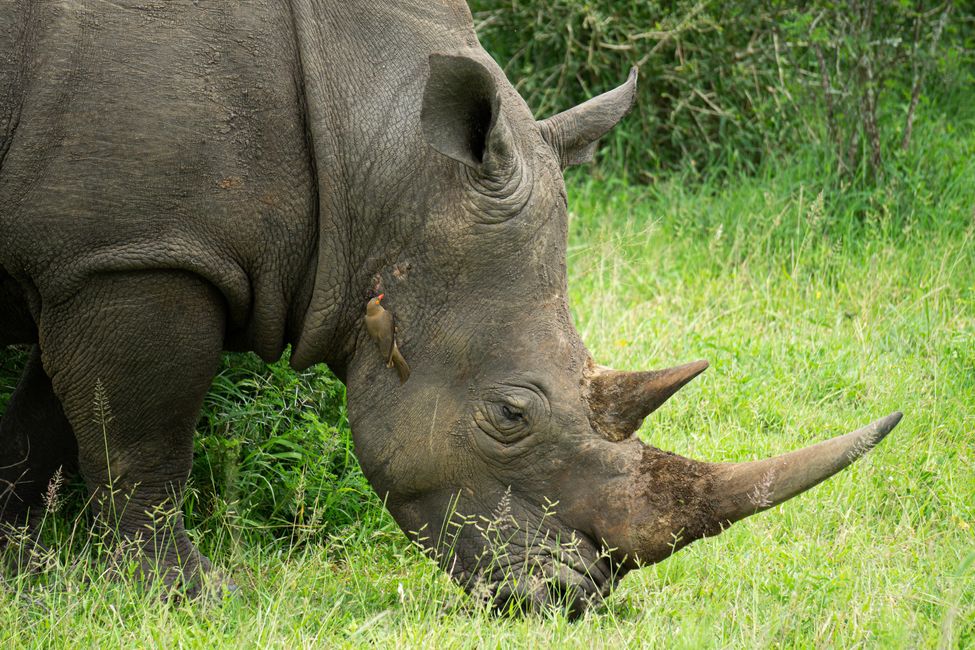
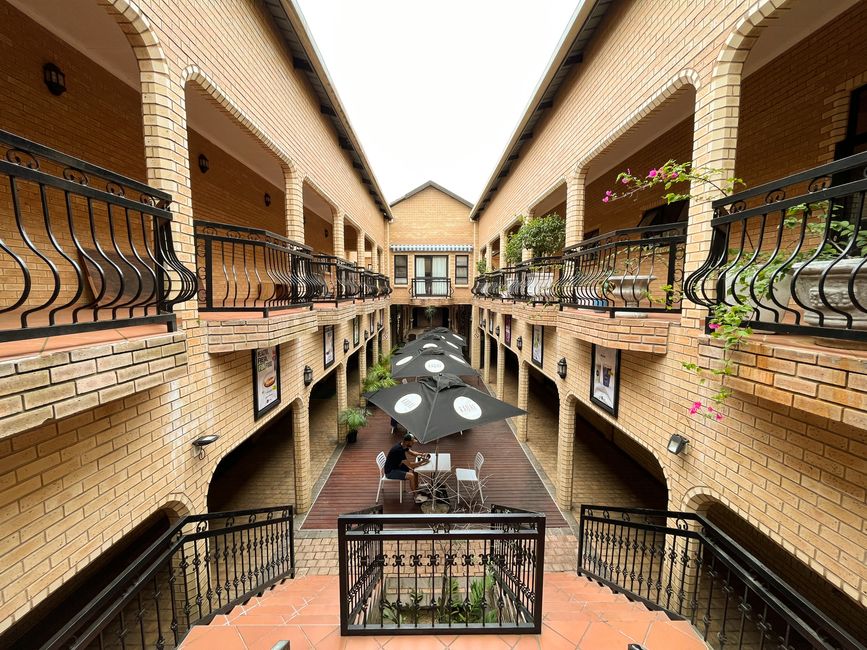
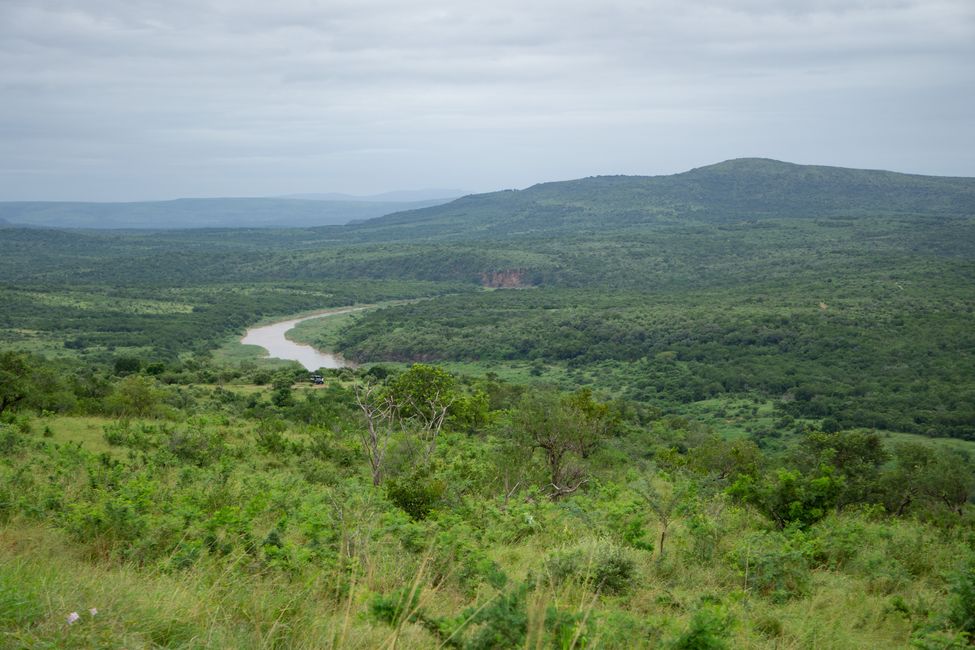
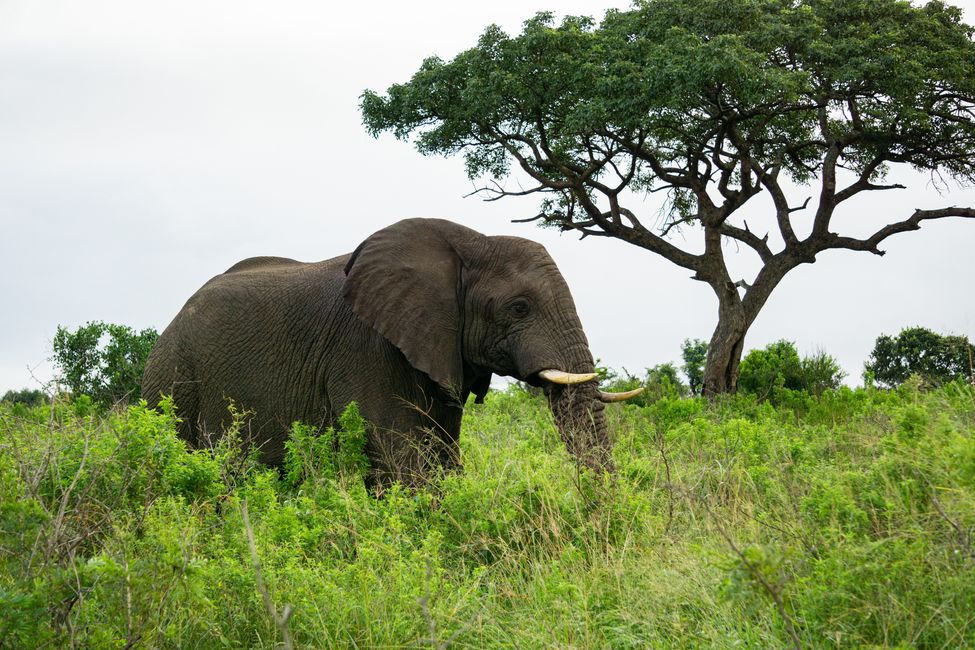
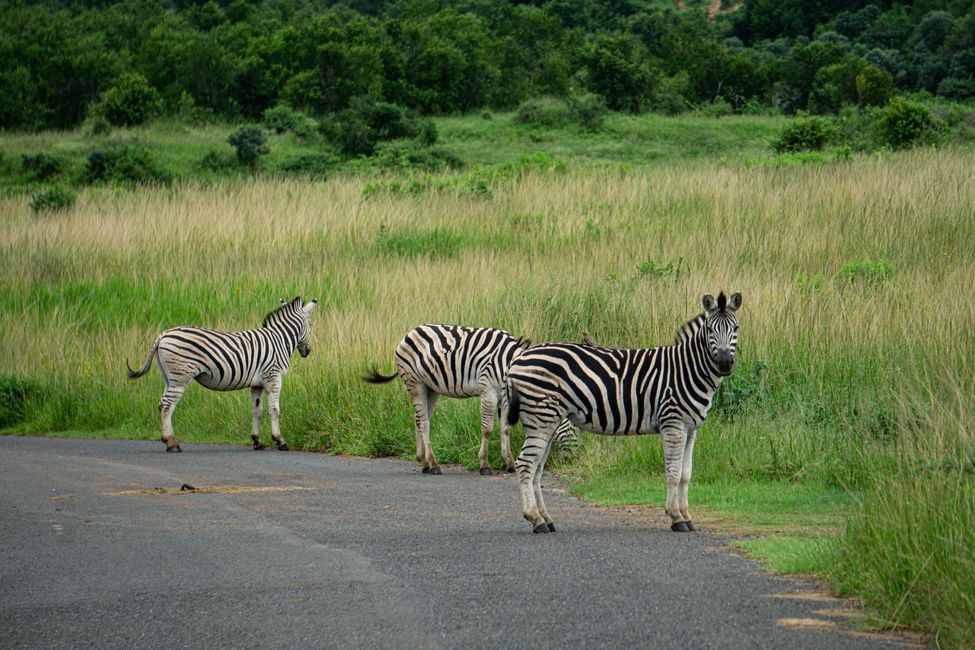
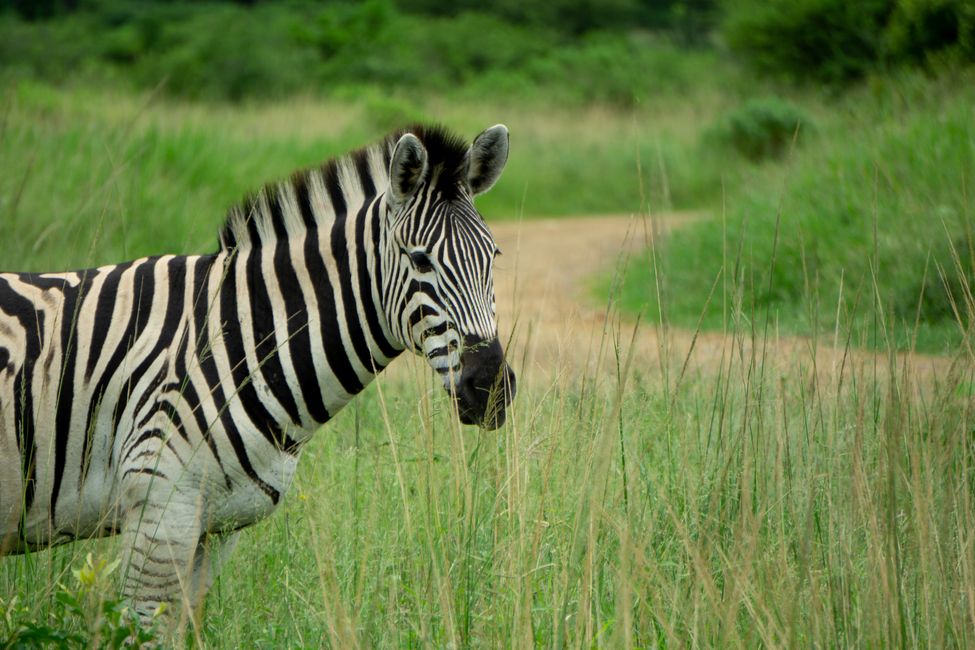
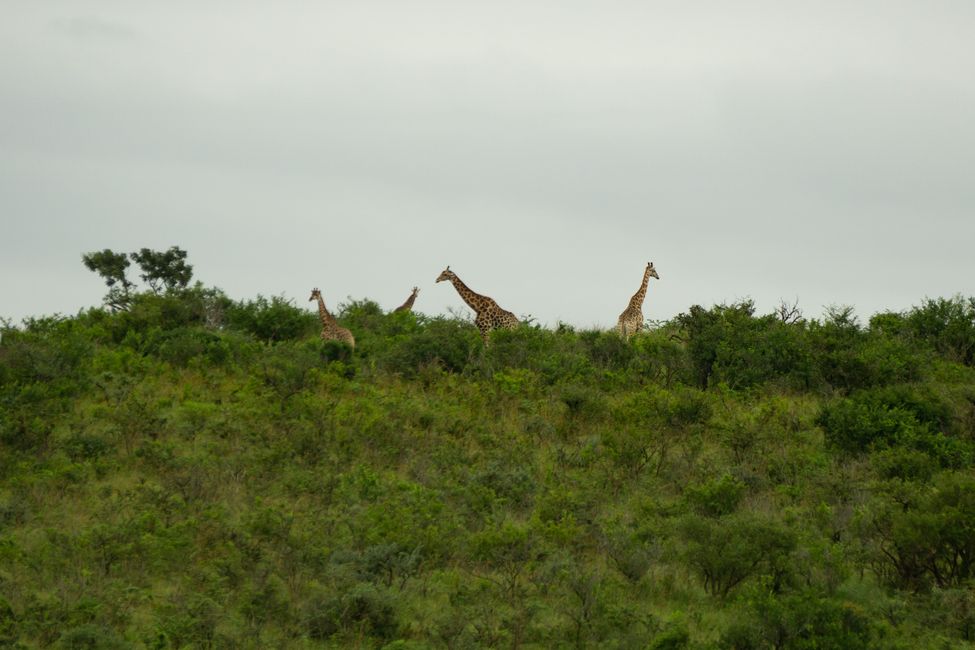
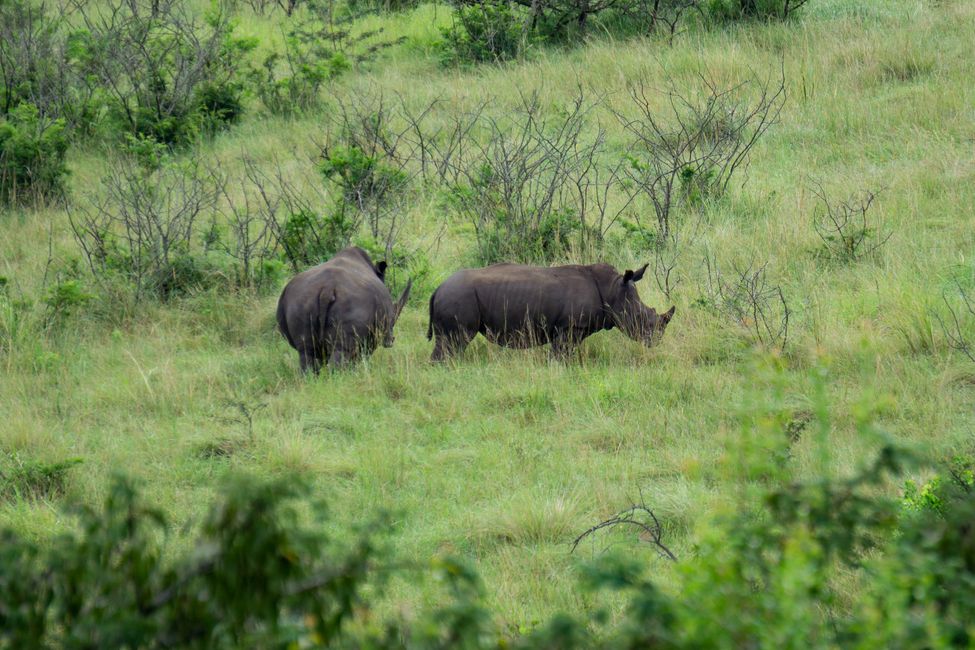
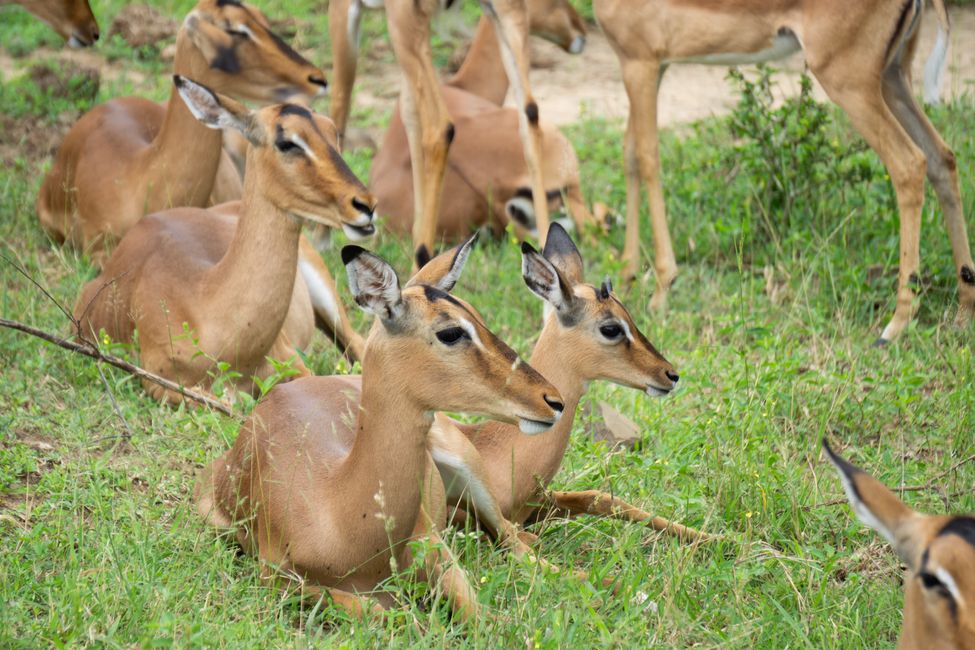
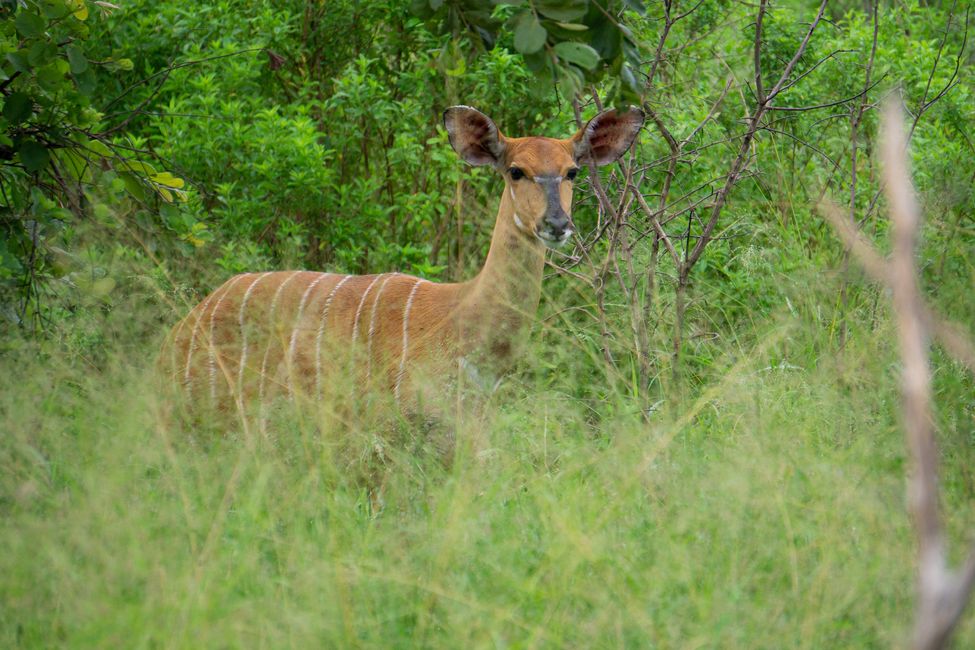
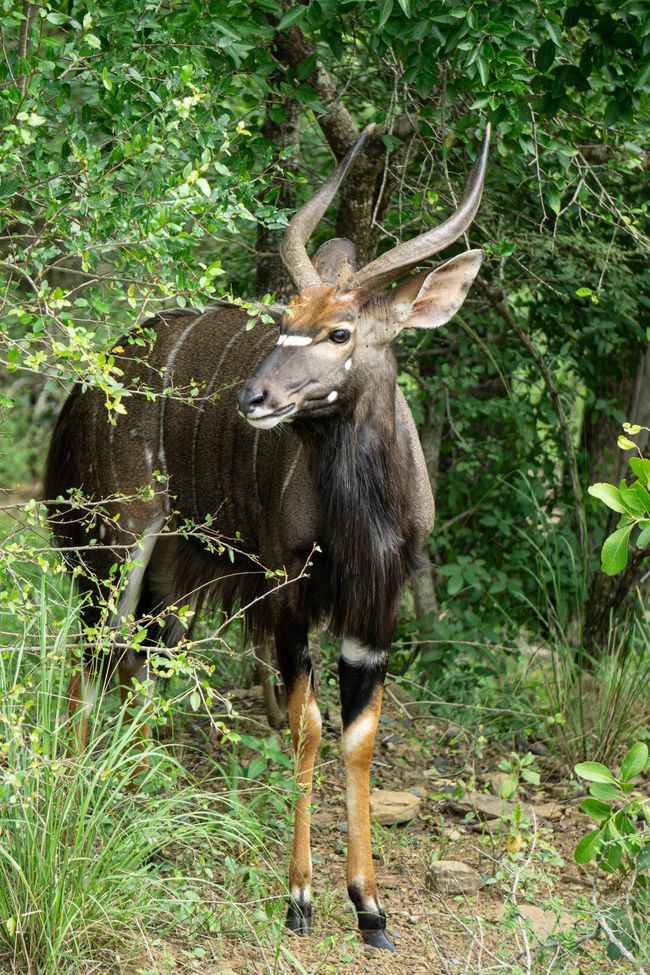
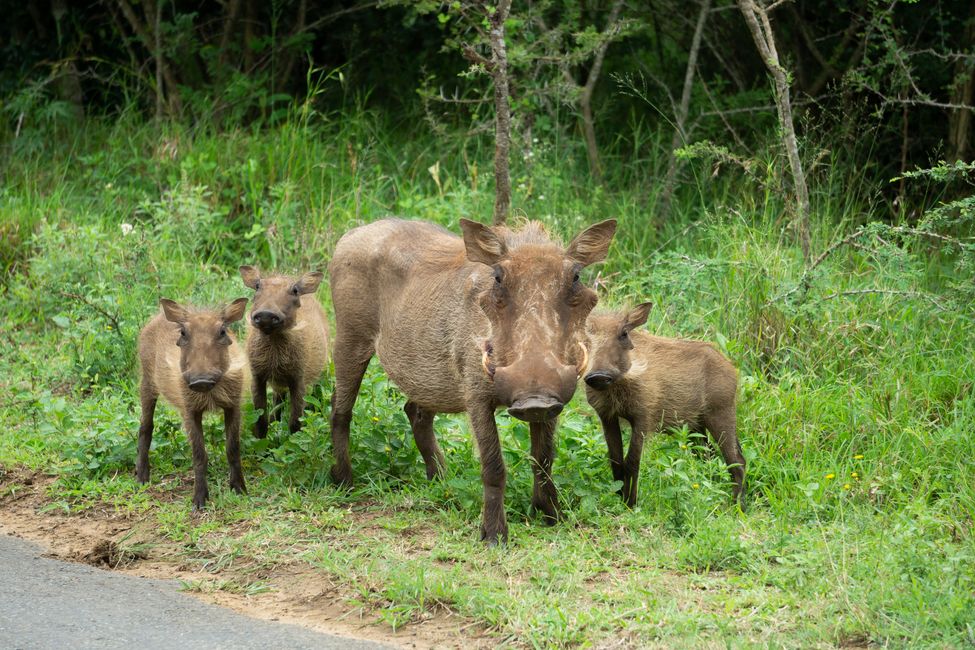
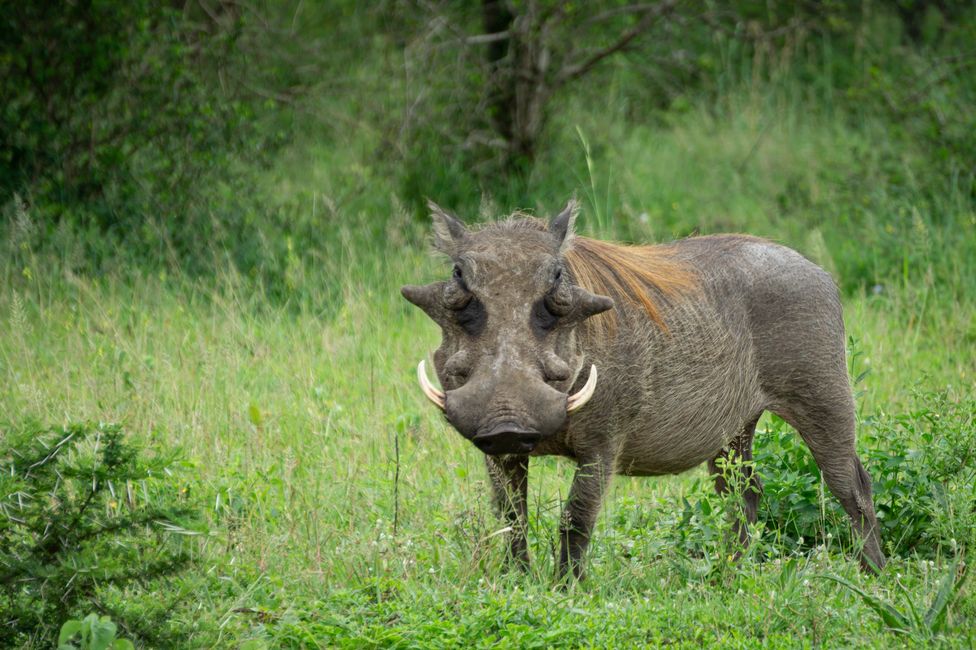
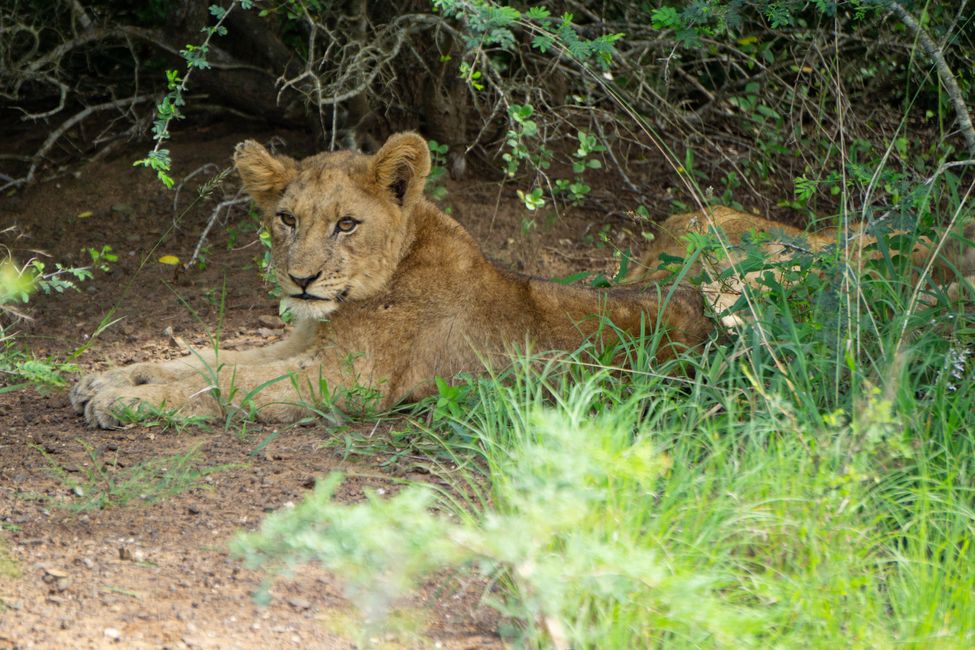
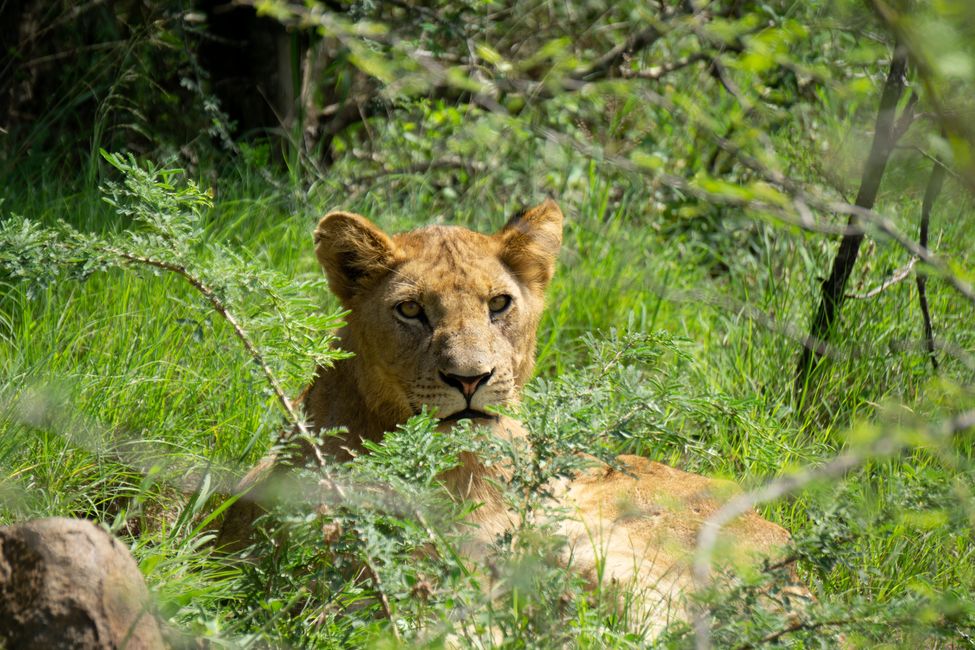
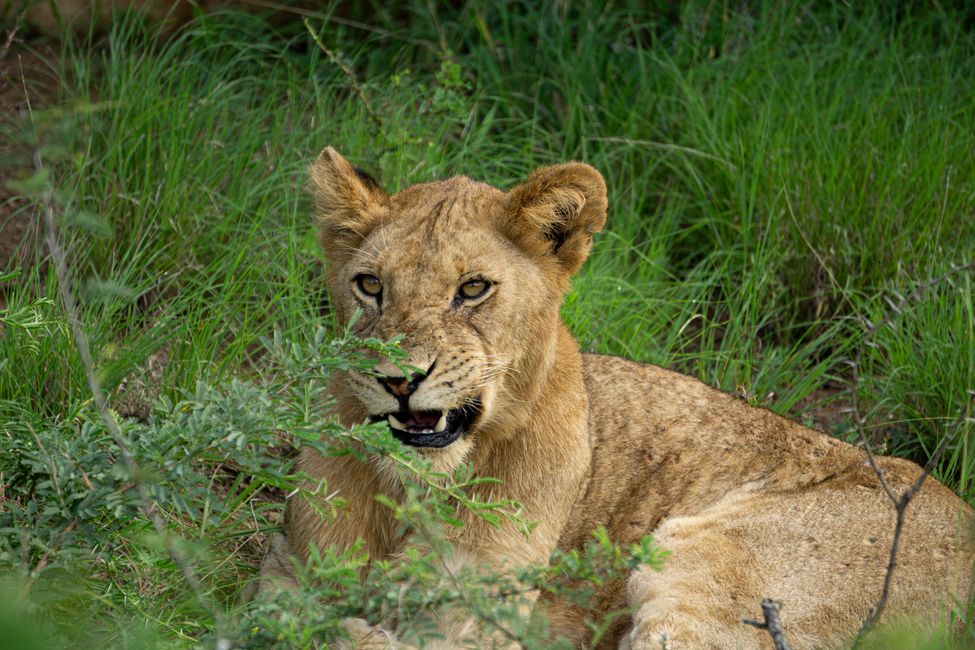
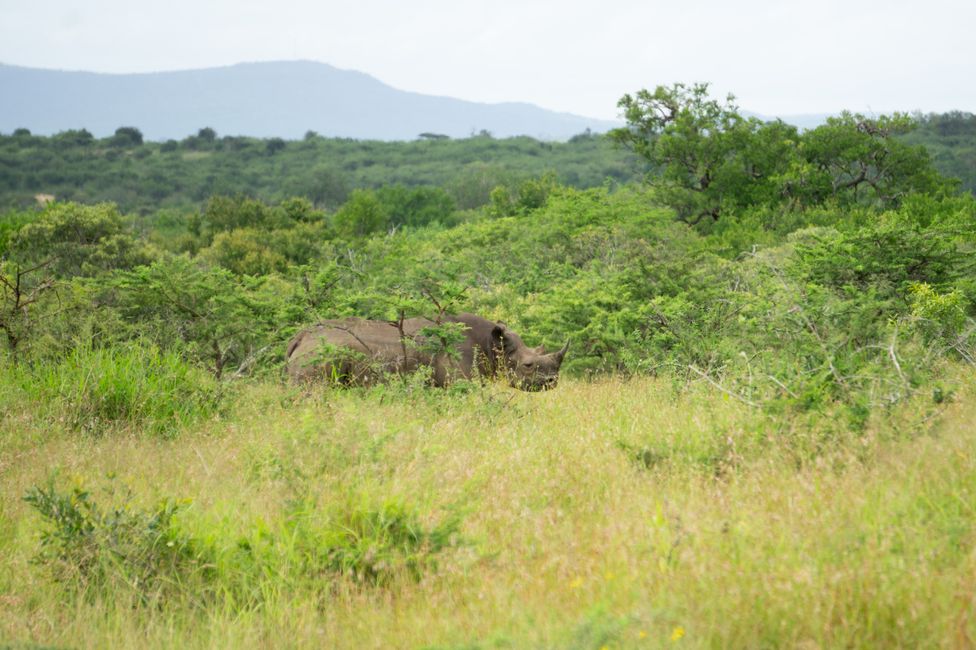
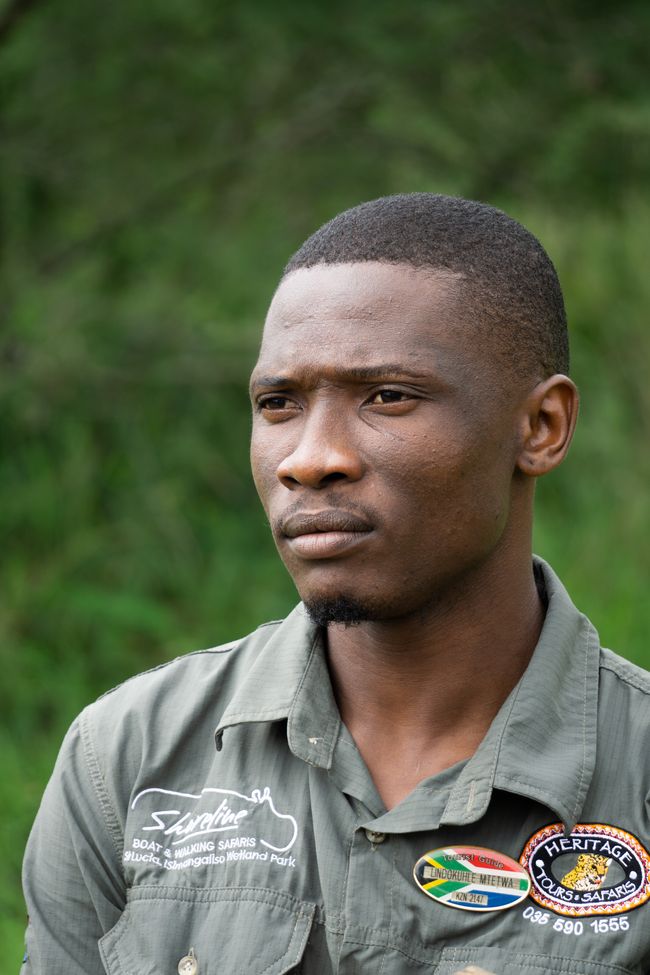
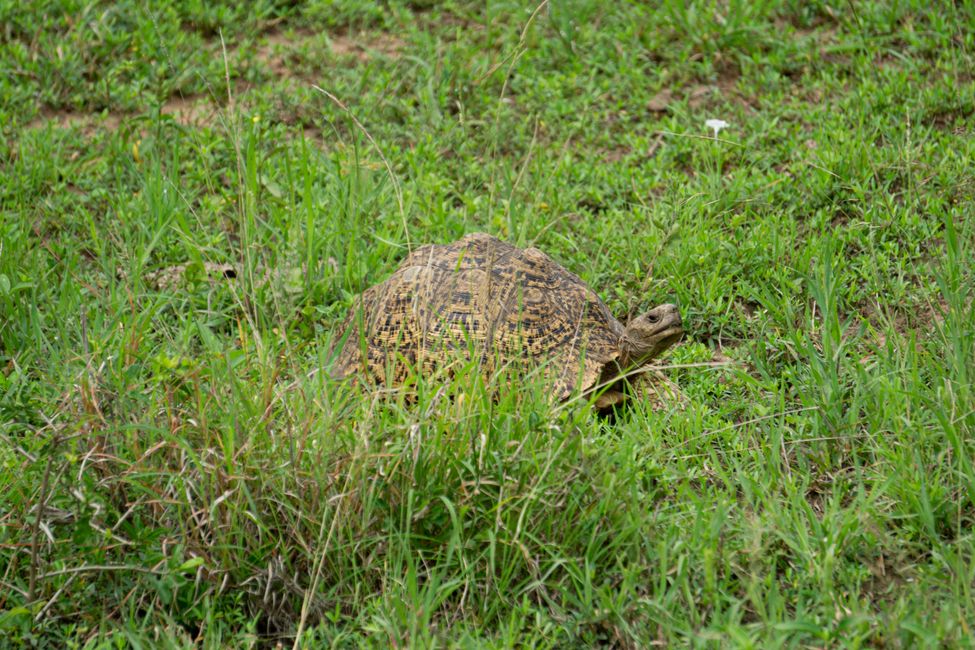
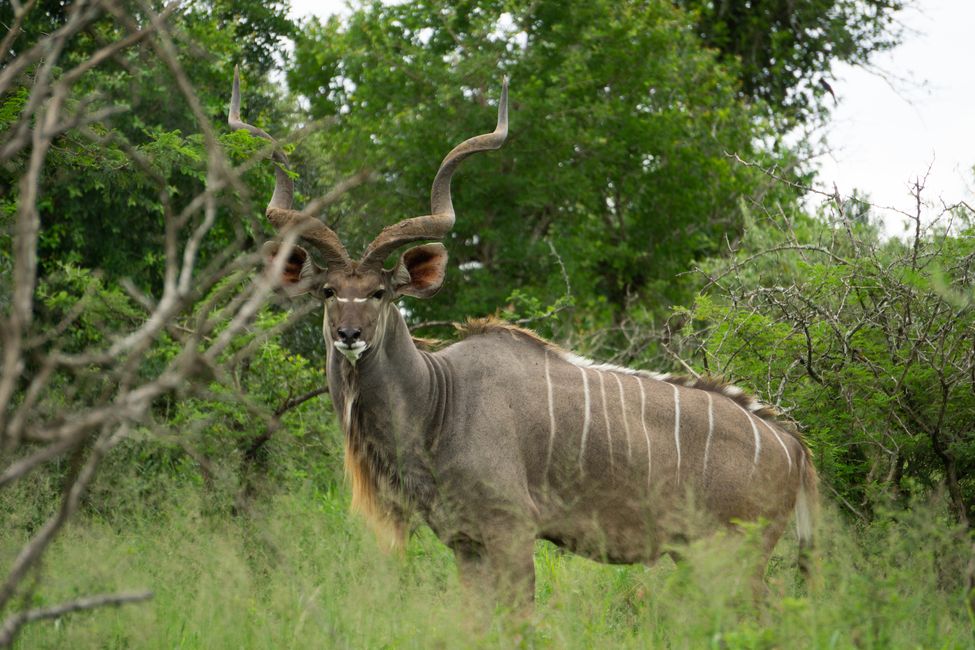
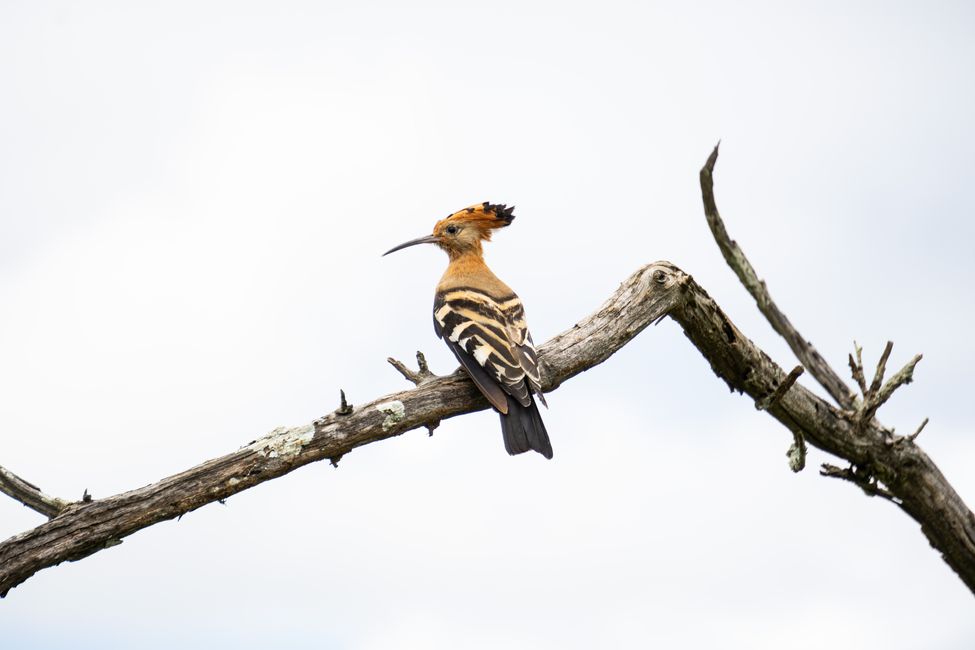
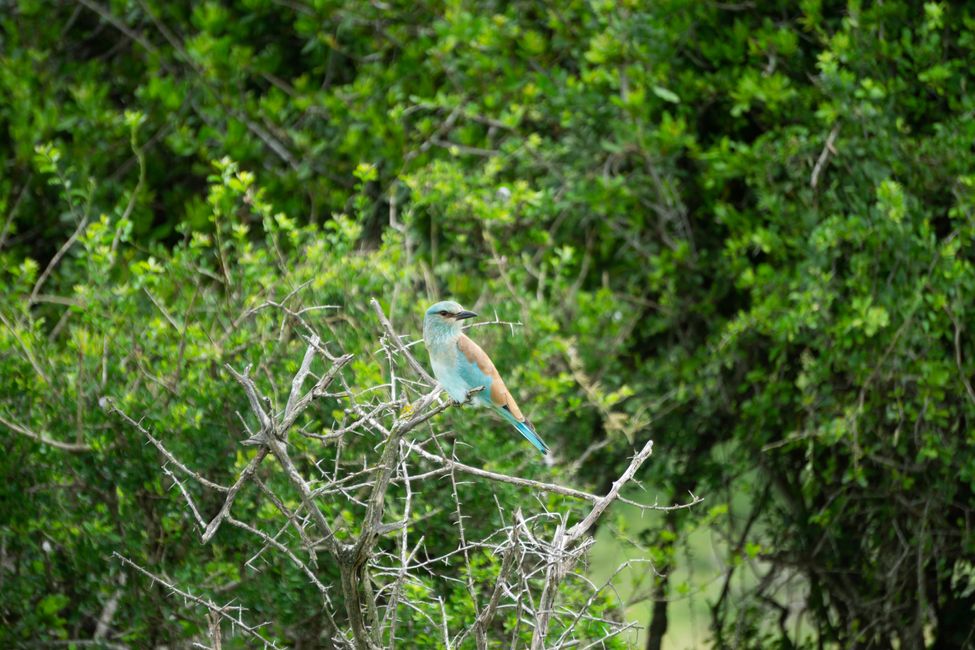
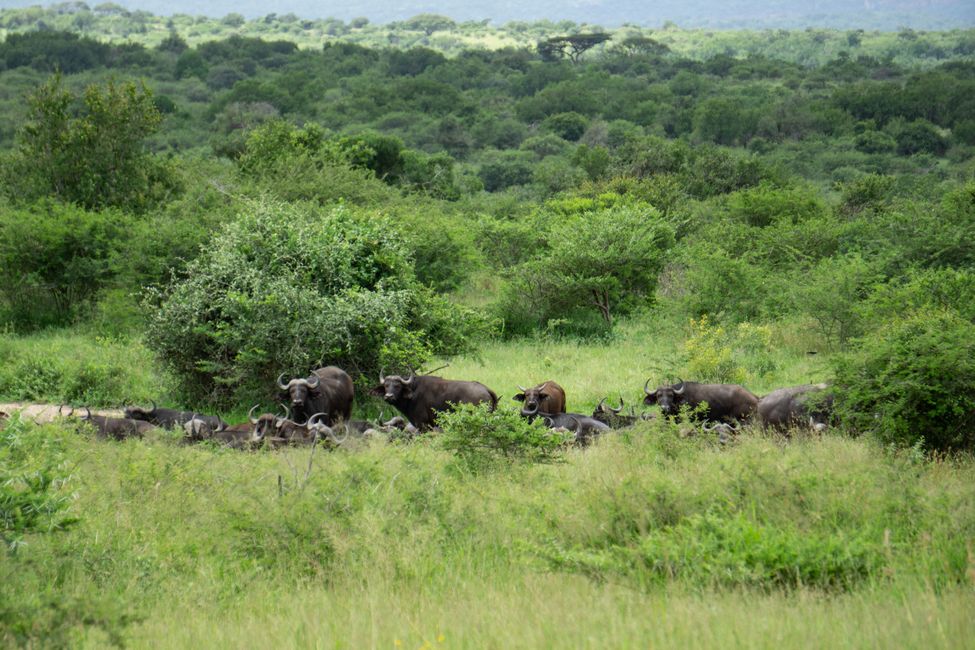
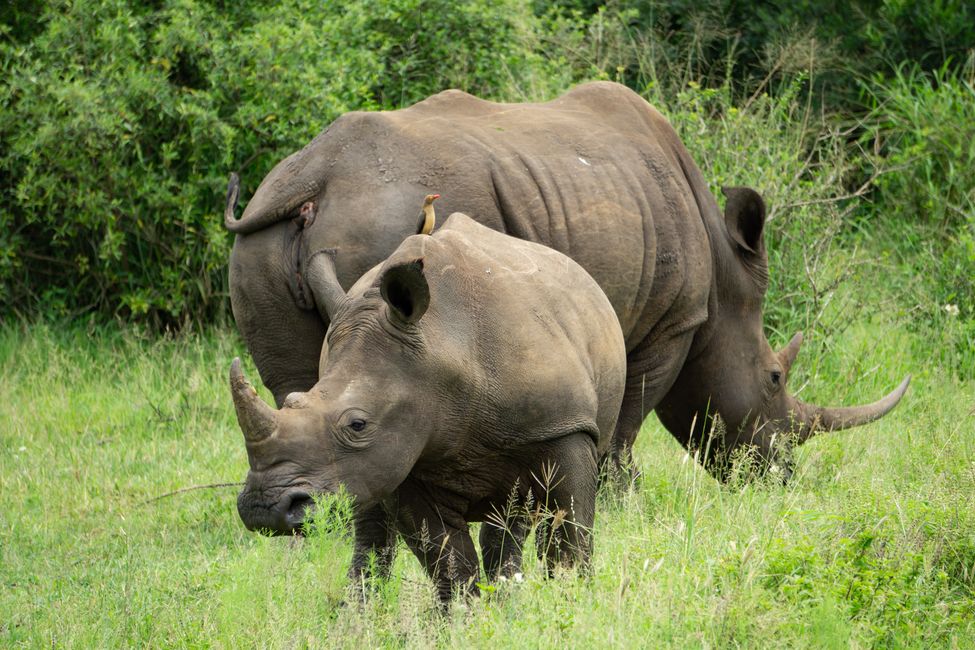
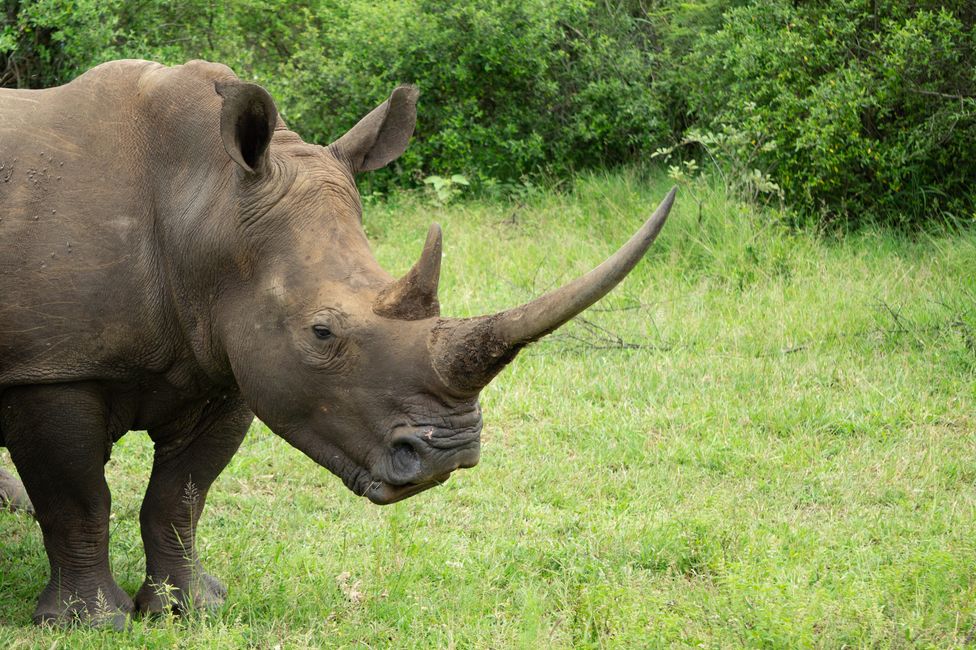
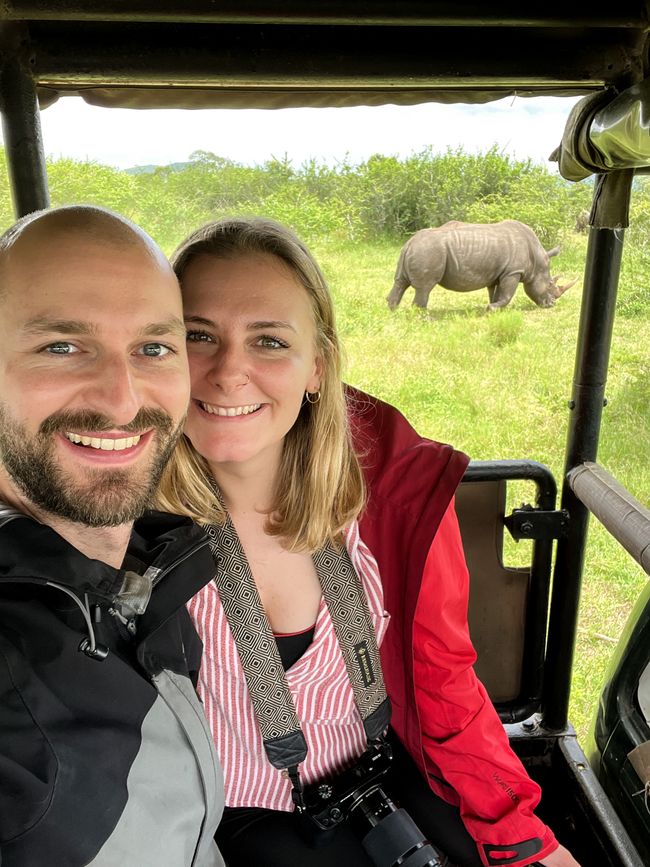
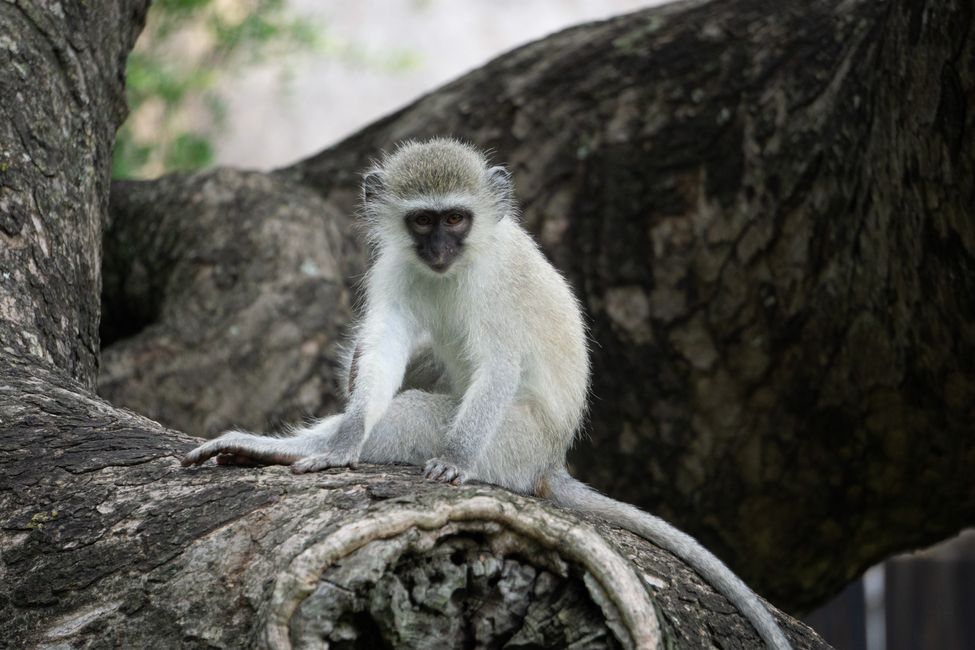
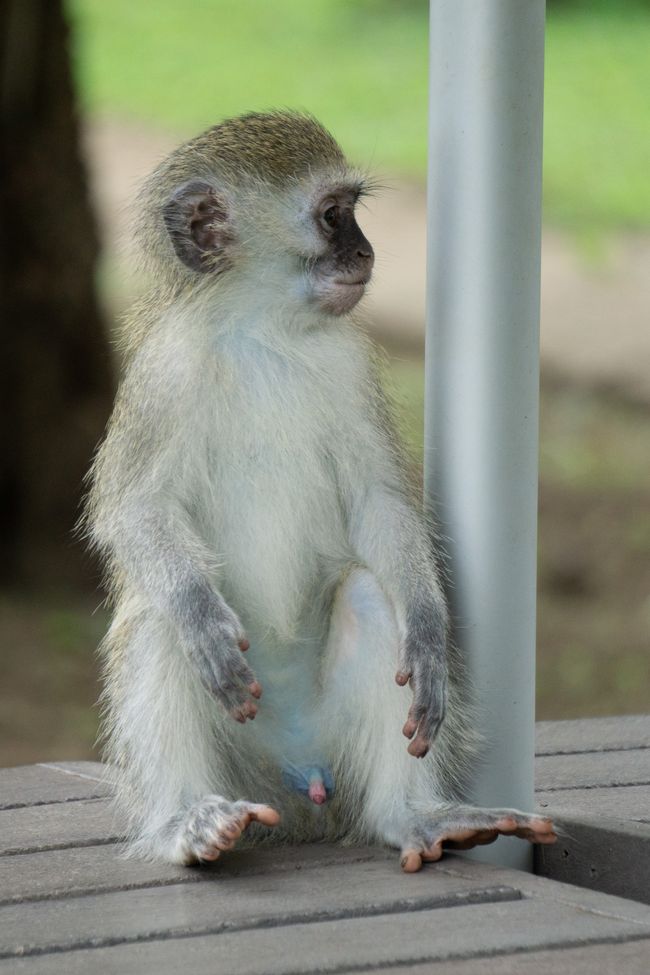


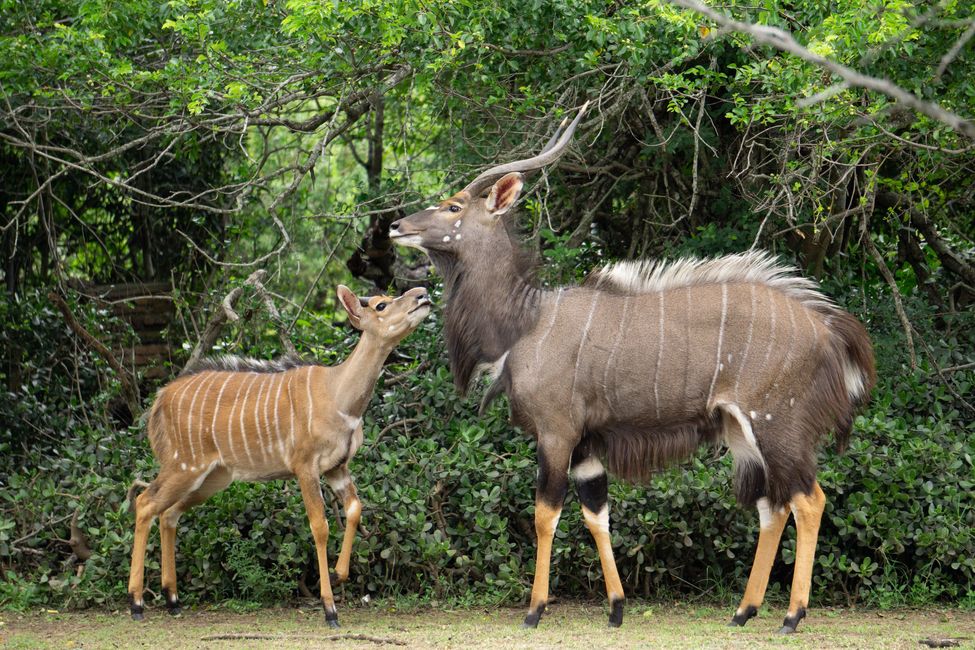
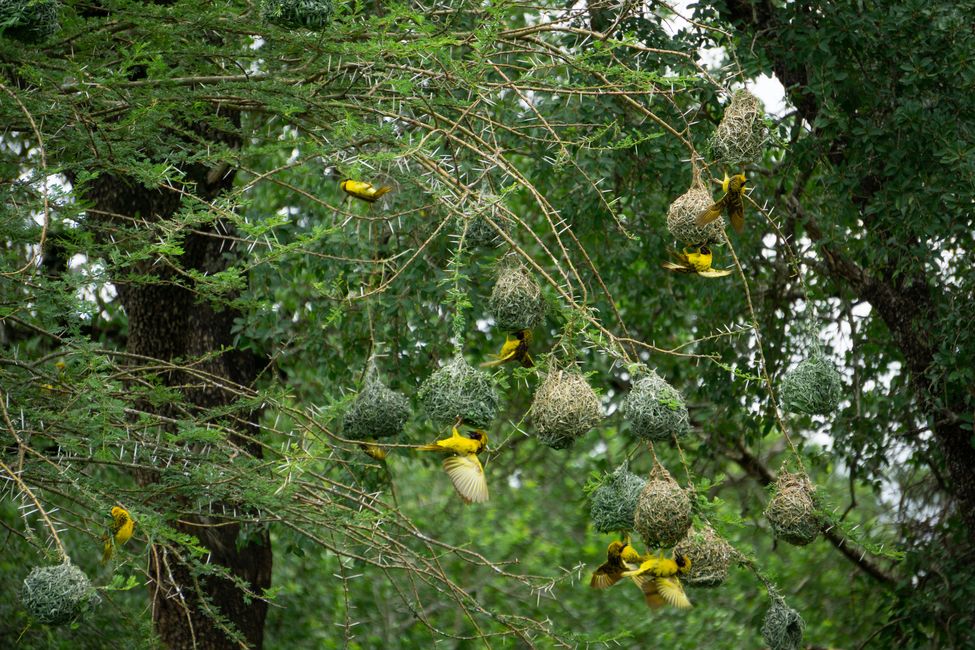
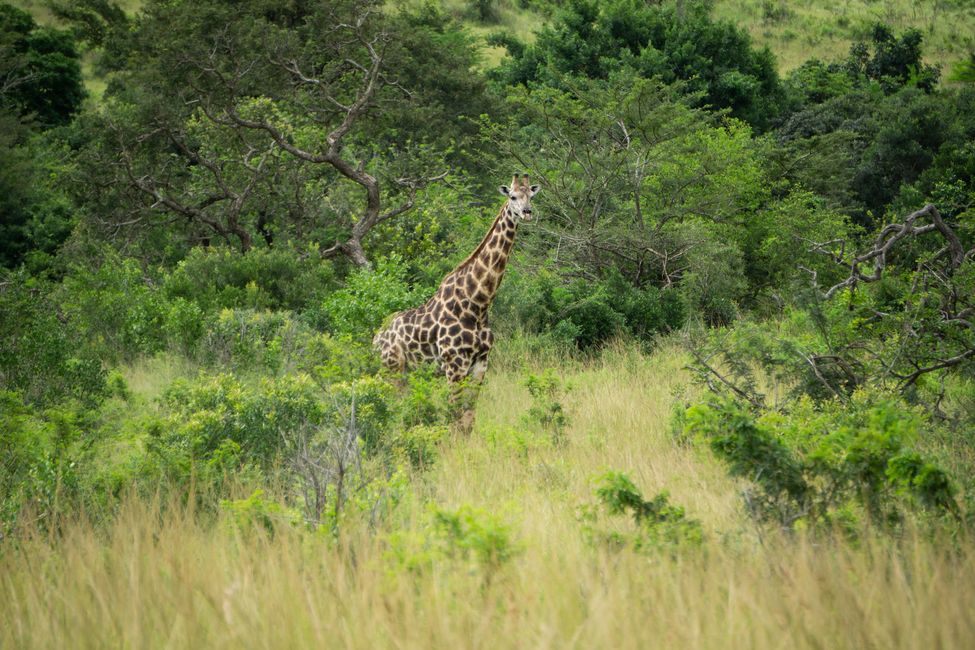
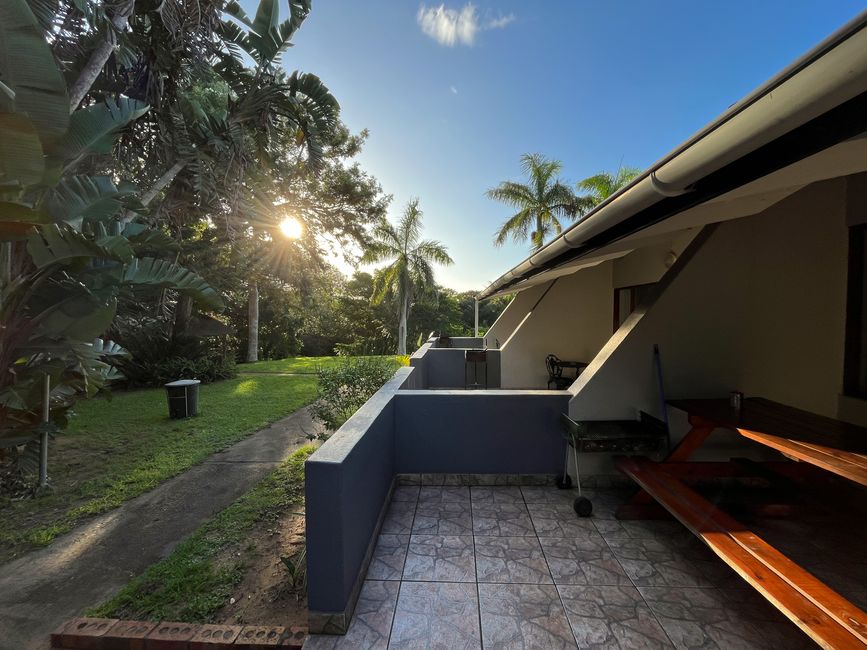
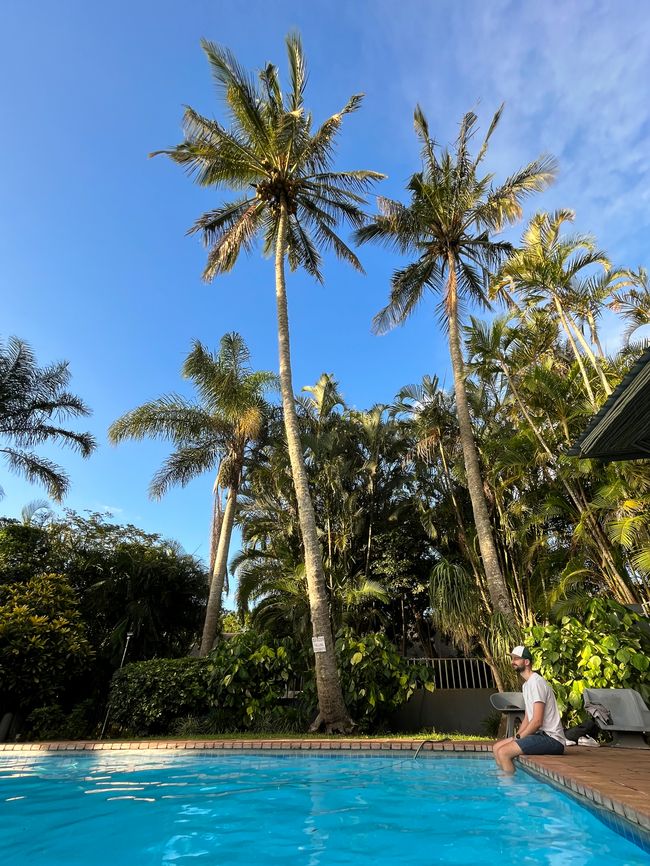
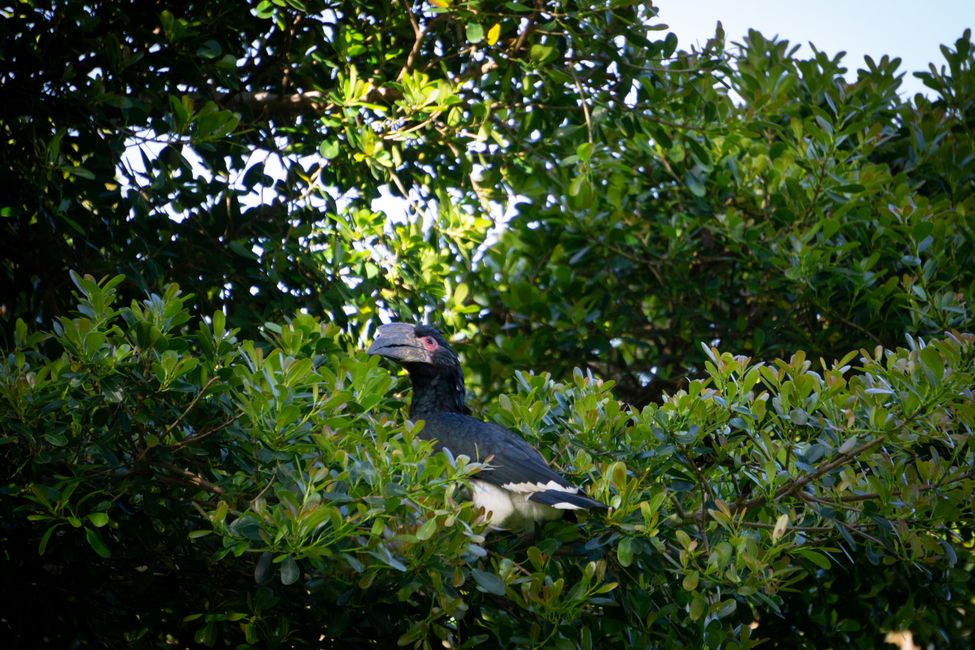
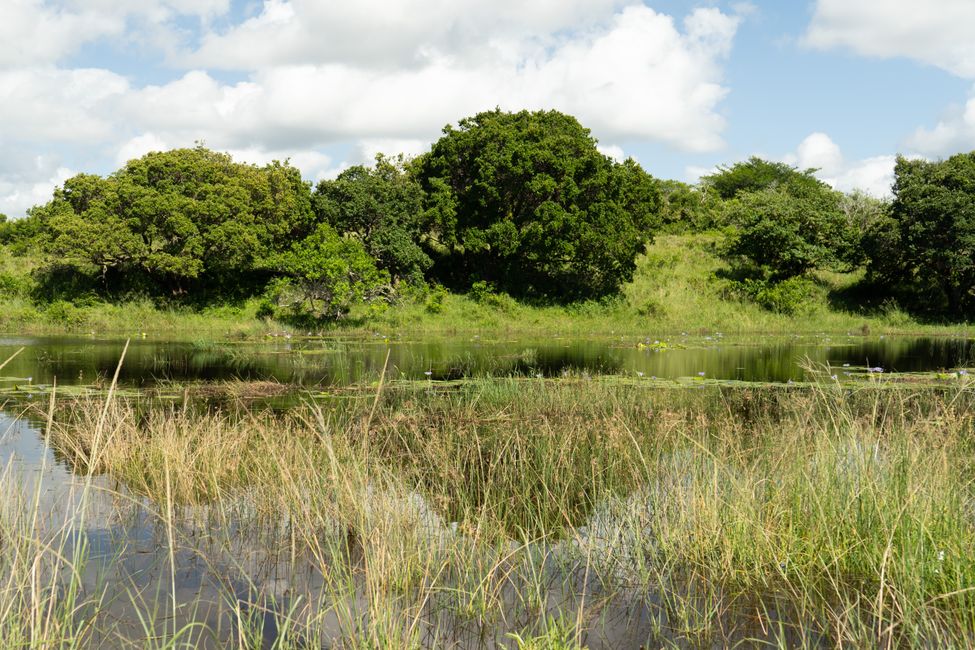
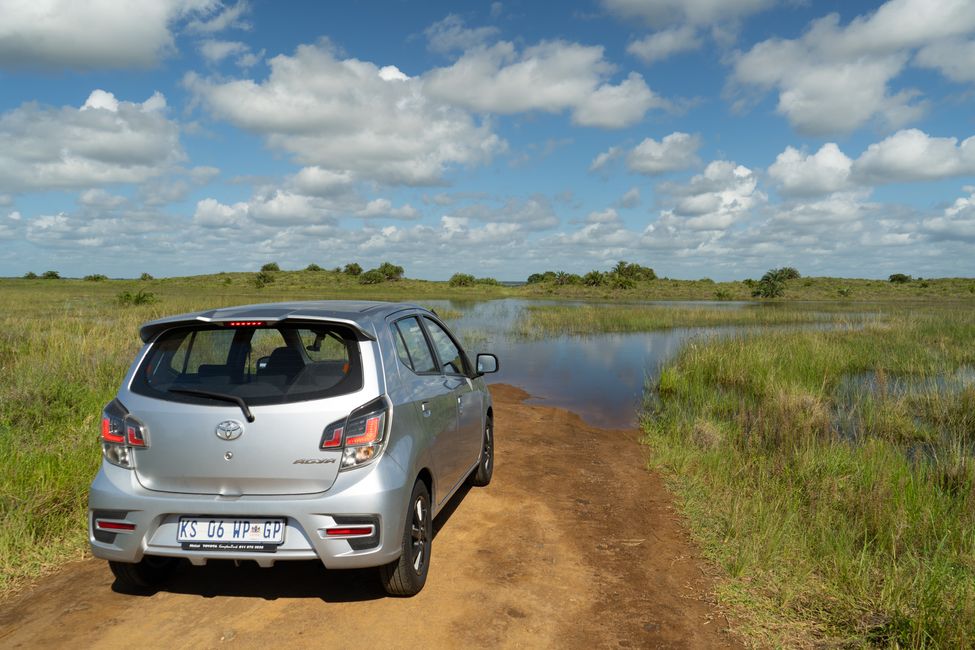

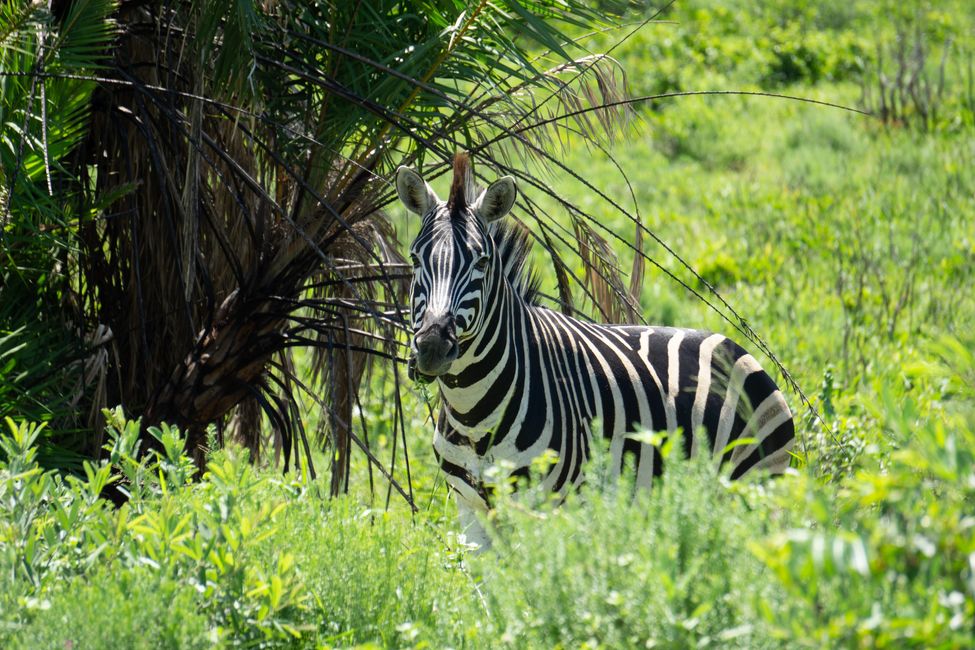
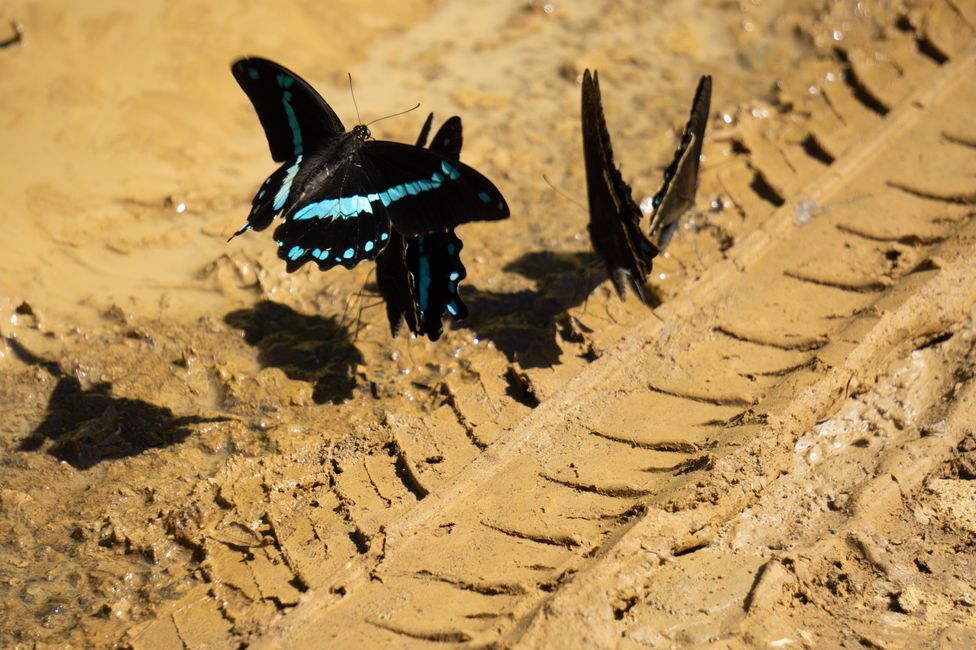
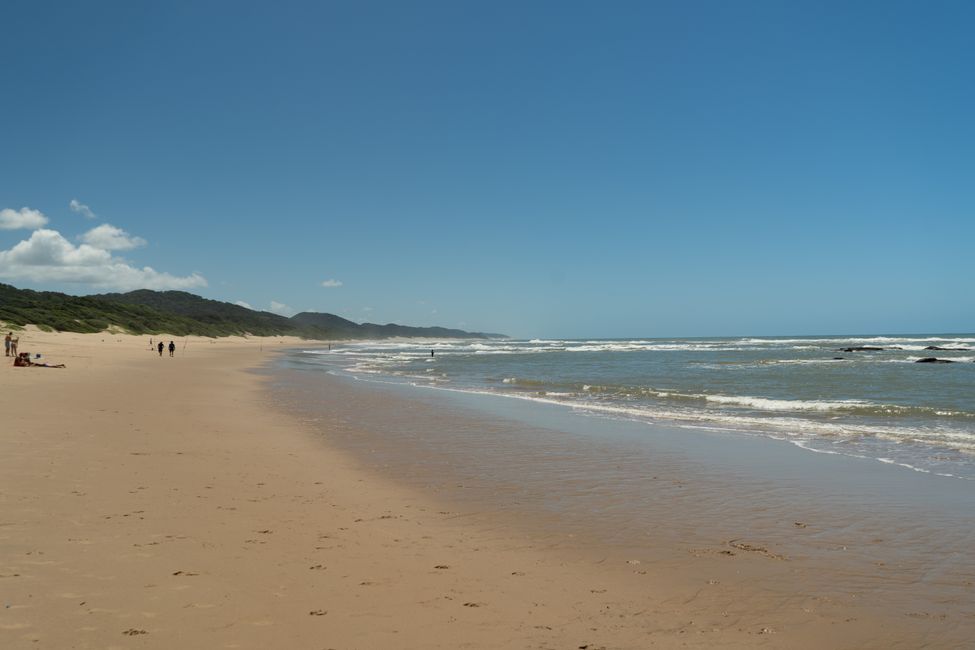
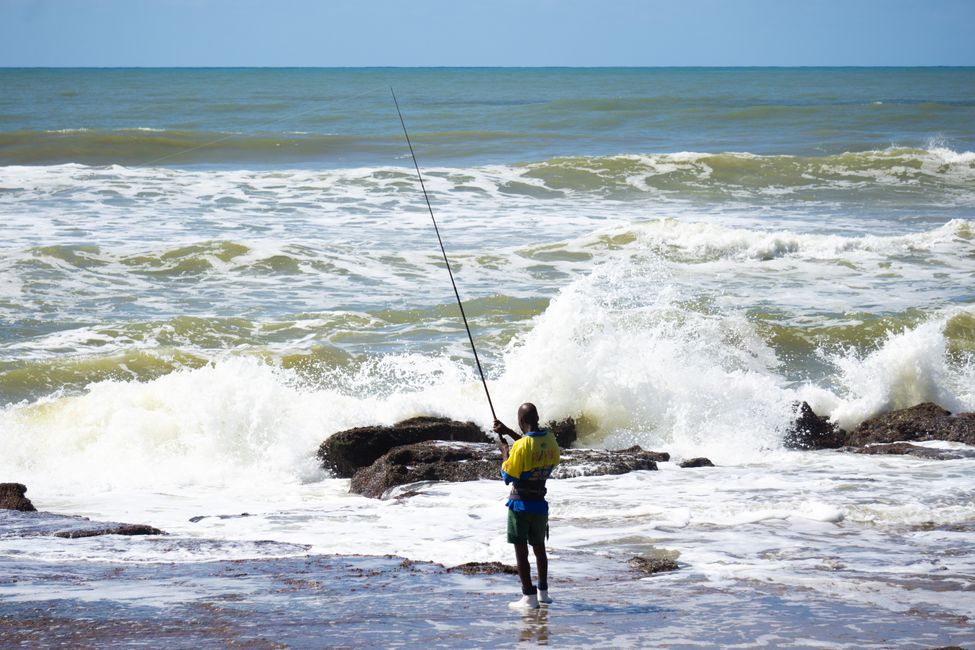
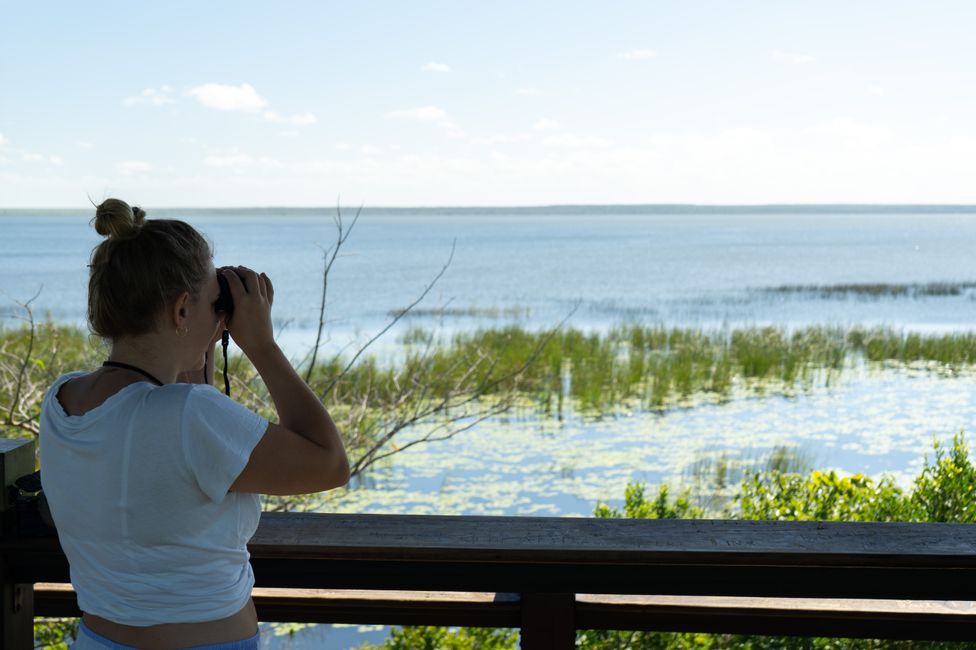
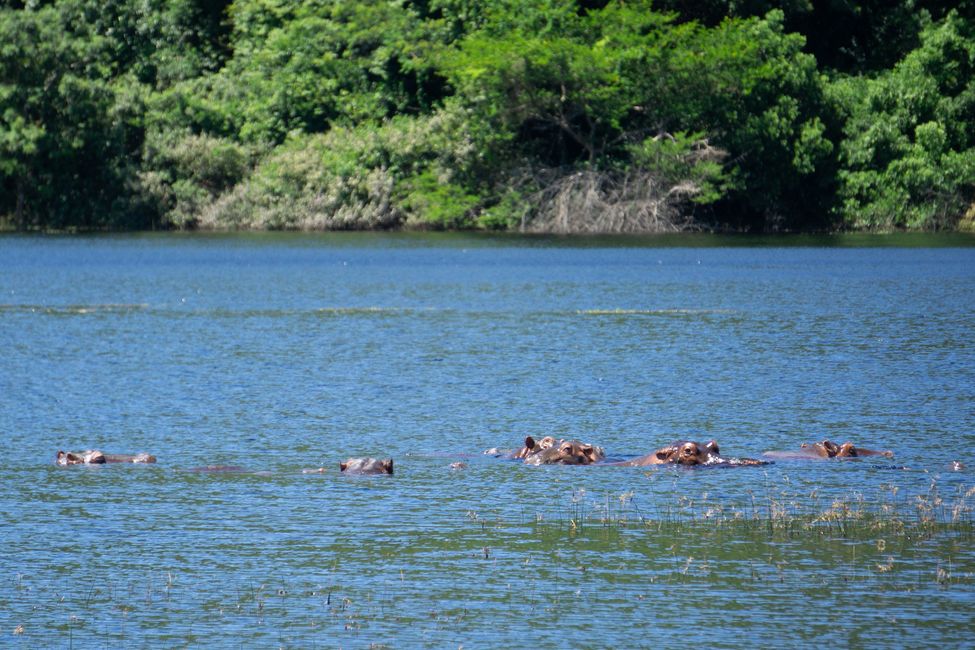
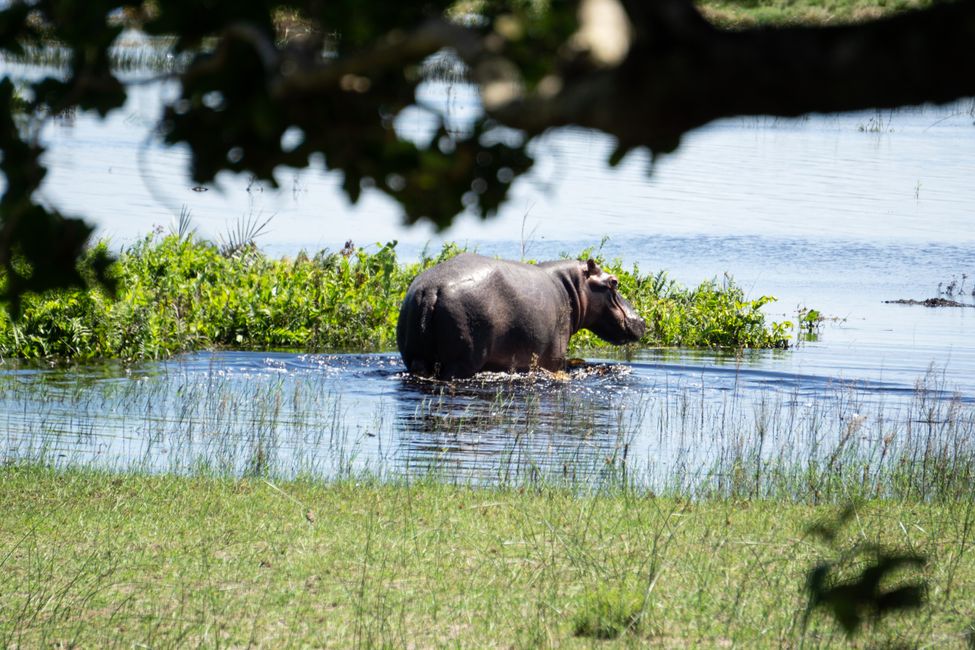
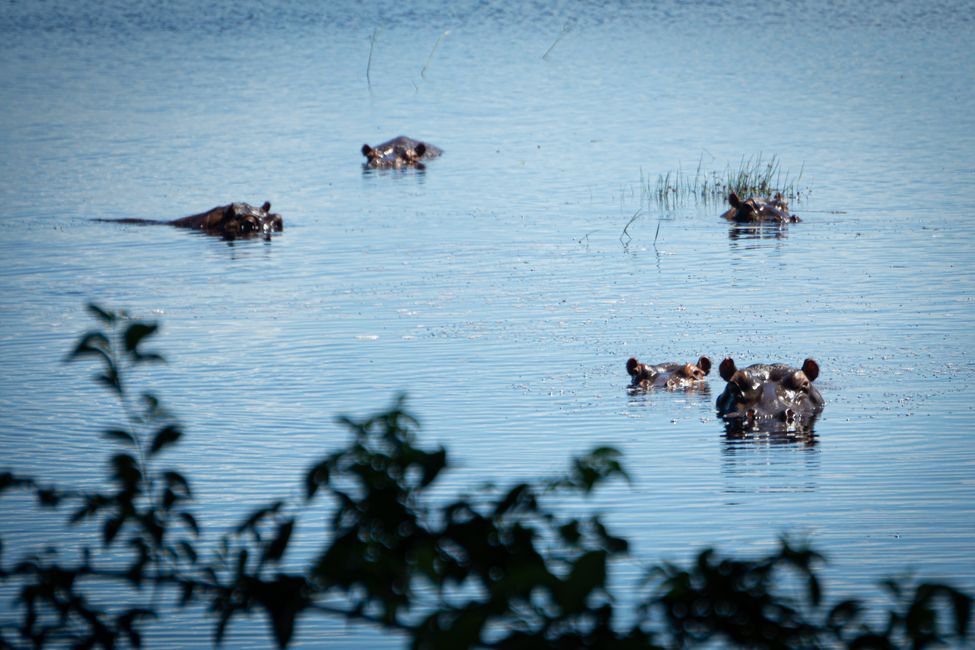
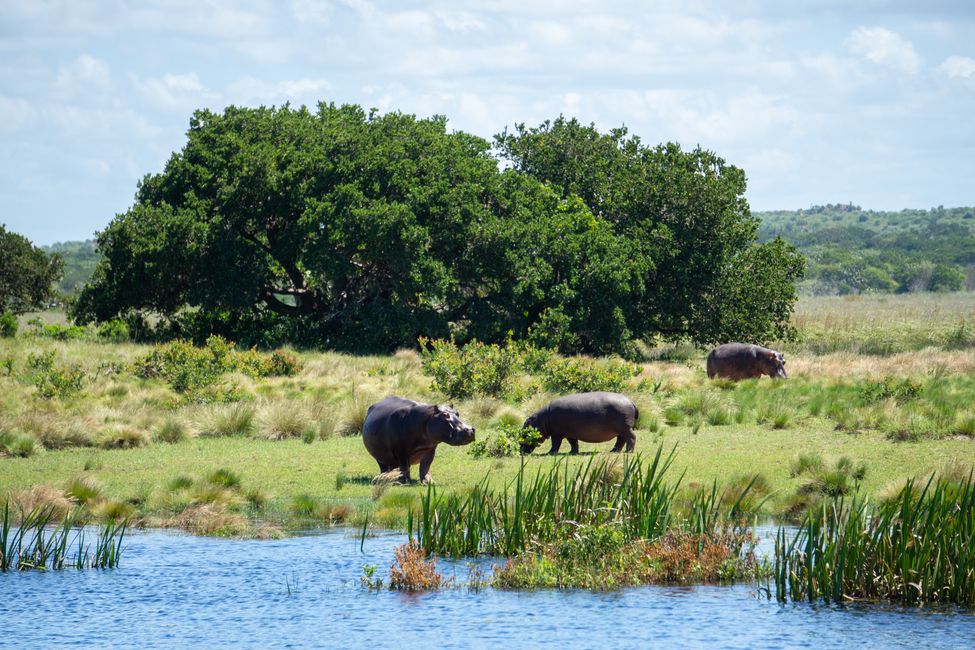
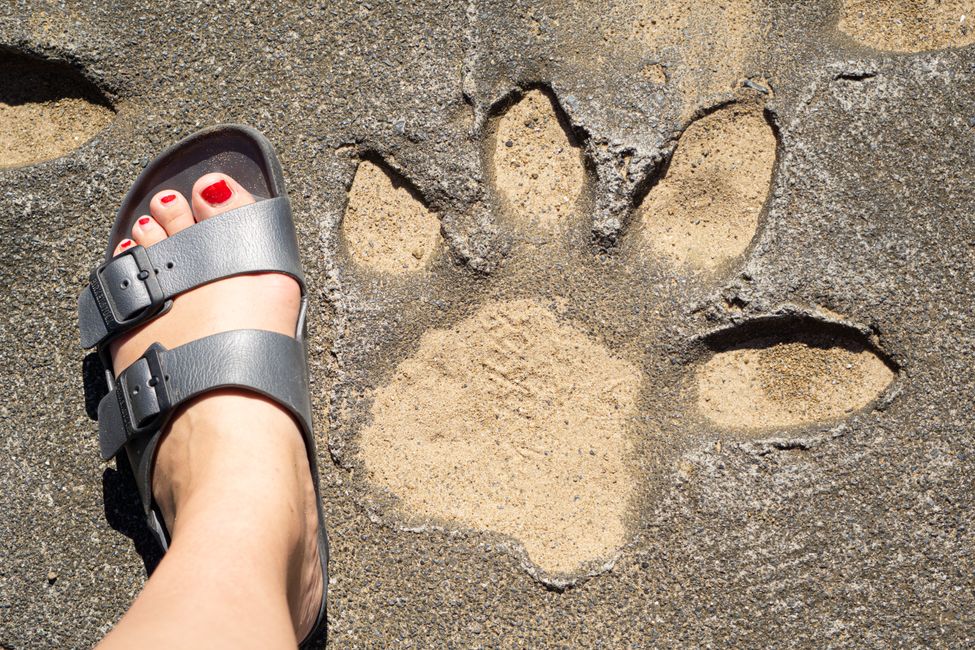
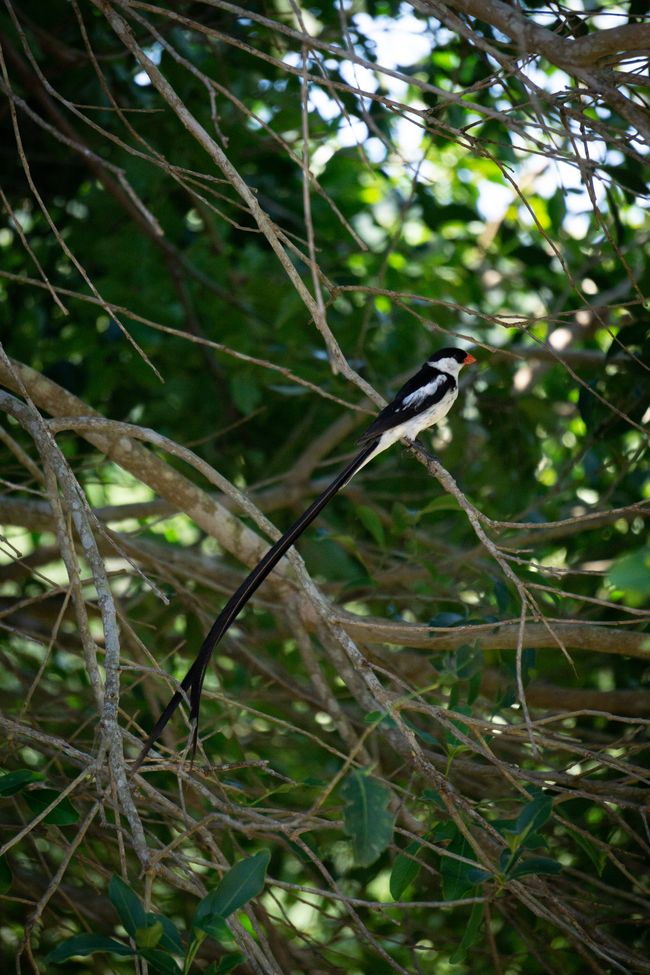
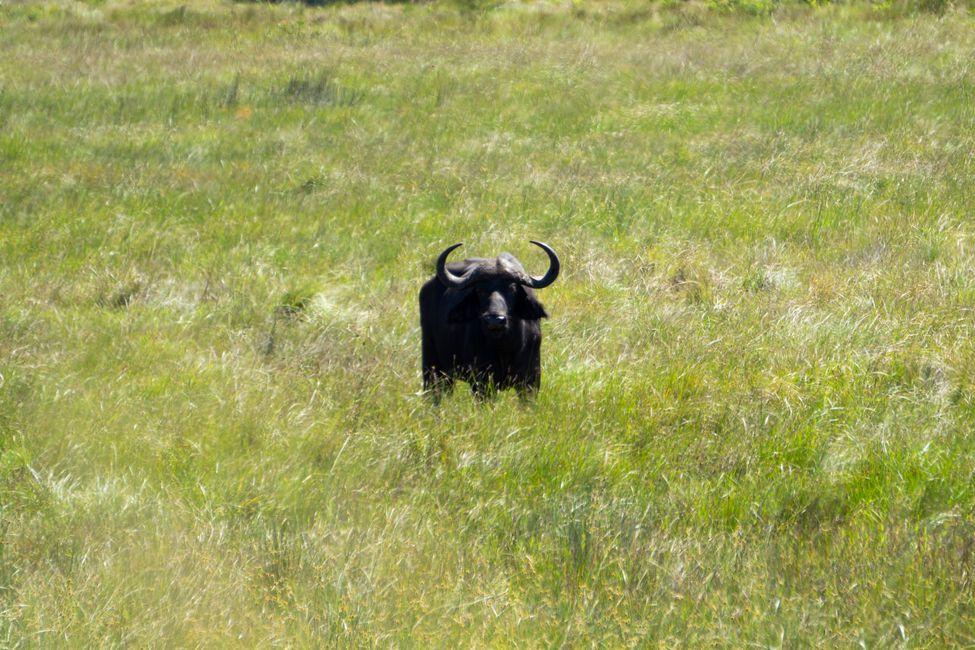
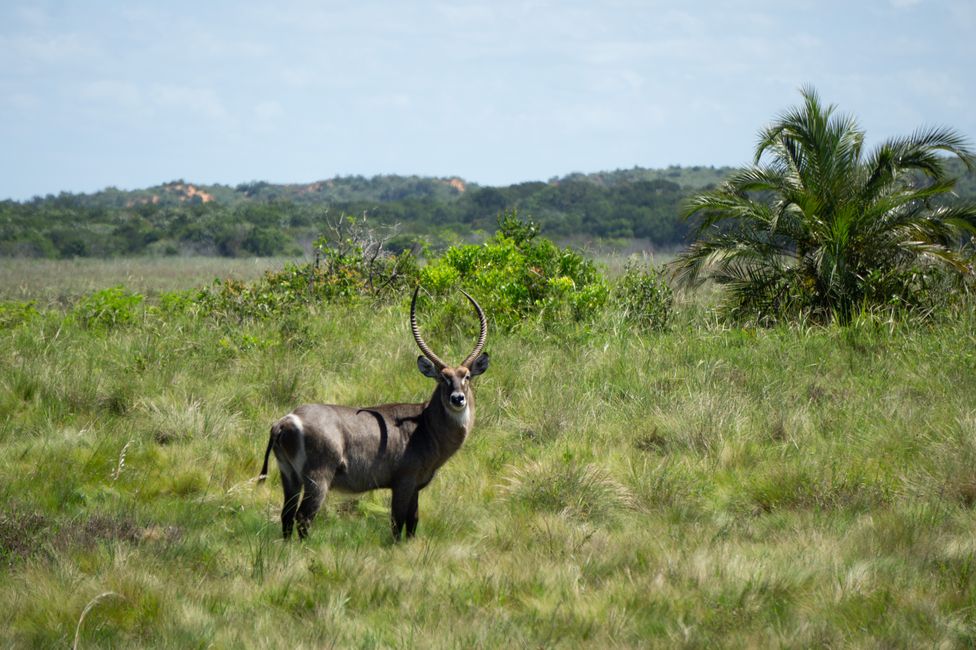
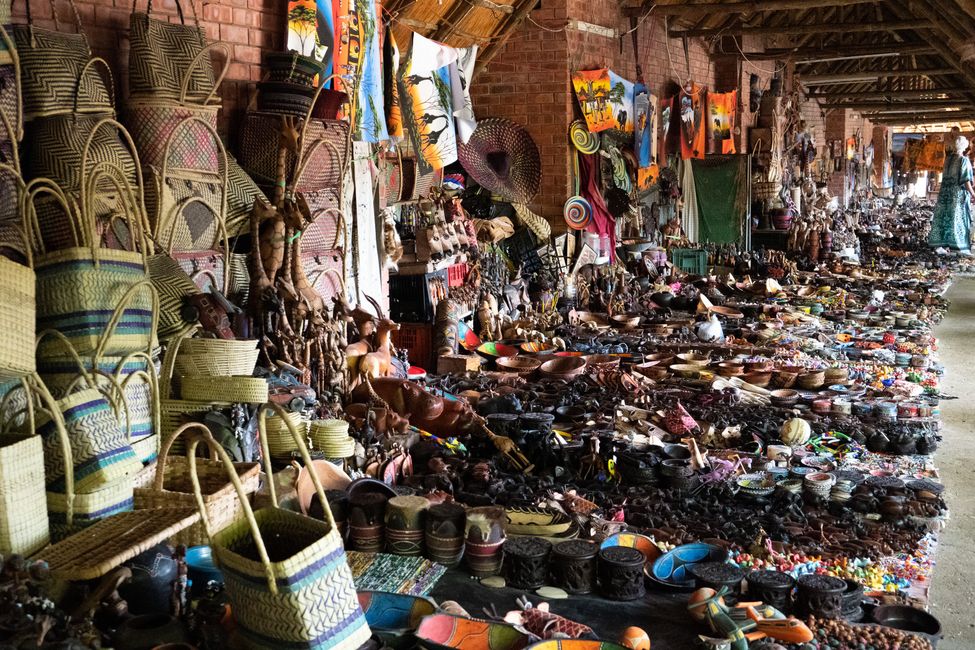
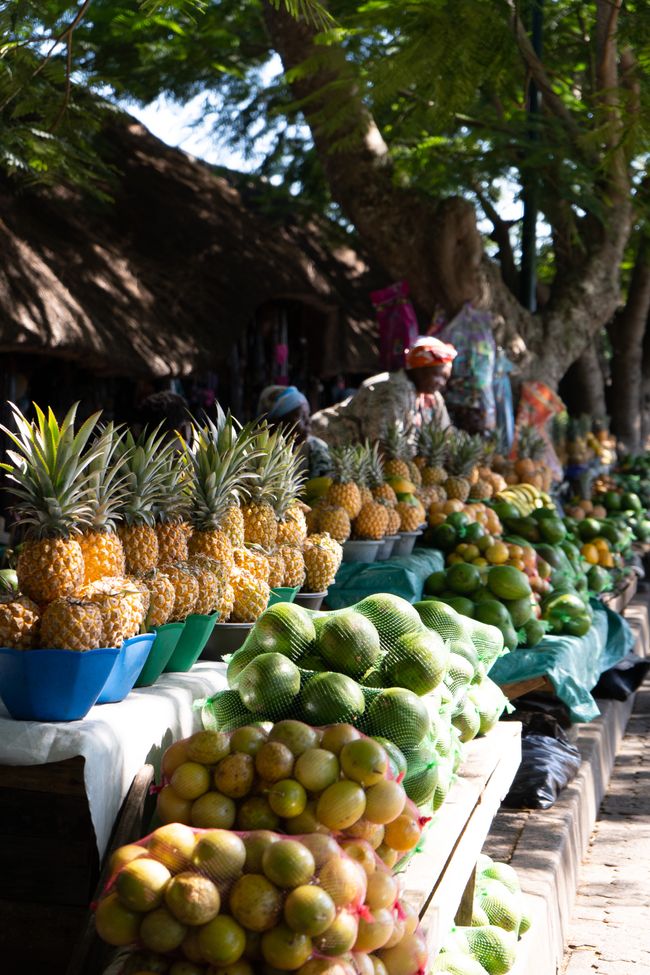
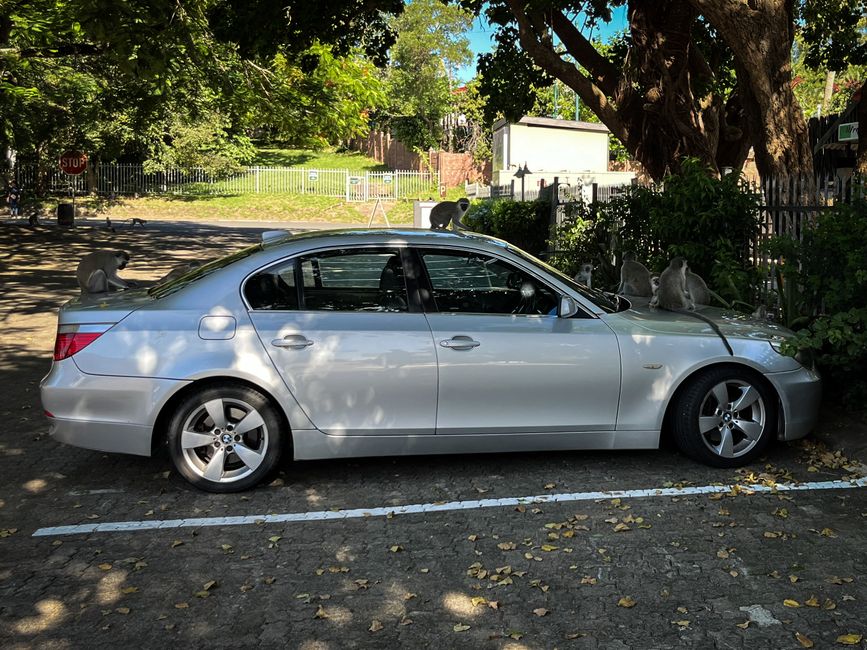
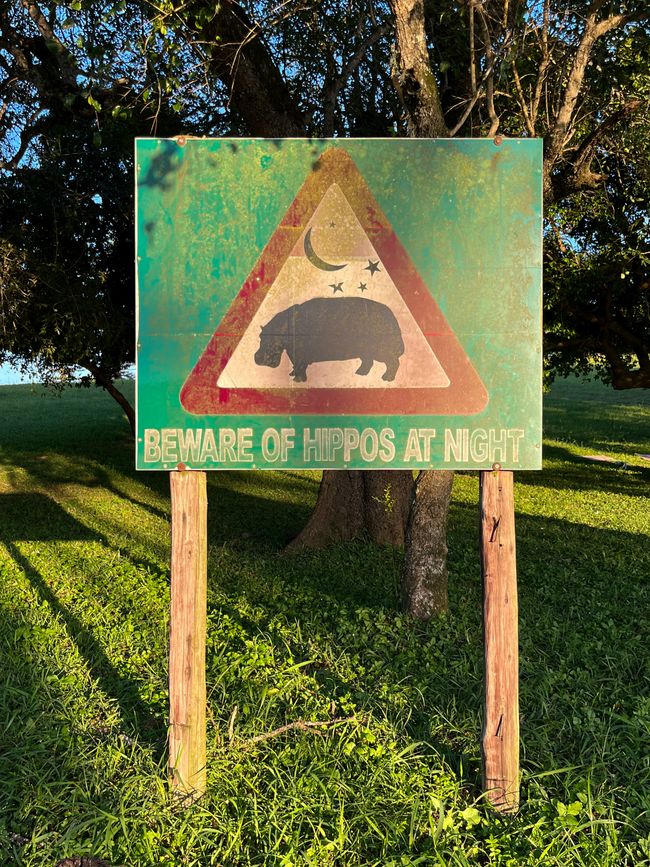
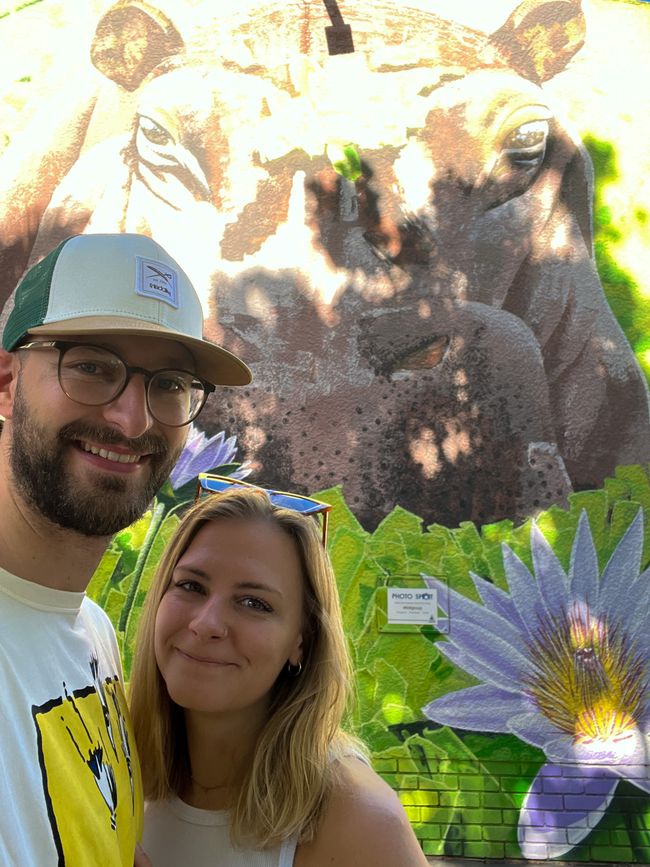
समाचार पत्रिका के लिए सदस्यता लें
A safari in one of the many national parks in South Africa is a must! After all, there are so many fantastic animals and landscapes to see here. Of course, we don't miss this opportunity ;)
The unpronounceable “Hluhluwe iMfolozi Park” is Africa's oldest game reserve and certainly not as crowded as Kruger National Park. It is also possible to stay in this park, but we decide to stay in St. Lucia.
St. Lucia is a sweet little holiday resort with nice restaurants and shops and has everything you need. In our little accommodation, small monkeys jump through the trees, and you should be careful not to leave anything on the terrace because they take anything that is not nailed down.

We are currently in Stage 6 of load shedding for this region, which means that the power is off for up to 11 hours a day. We go to one of the outdoor shops to buy binoculars for tomorrow's safari and take note of the time when we can go to the ATM (because it's also out of order when the power is off, so you should always have enough cash with you). When we have light, power, and water again, we cook a small meal and go to bed early because the safari starts at 5 am tomorrow.

In the distance, we spot two rhinos, and a few giraffes are also peering through the trees on the horizon. Deep among the bushes, we spot a few water buffalo, which, like rhinos and elephants, are also part of the Big 5. The park is very quiet in the early morning twilight.
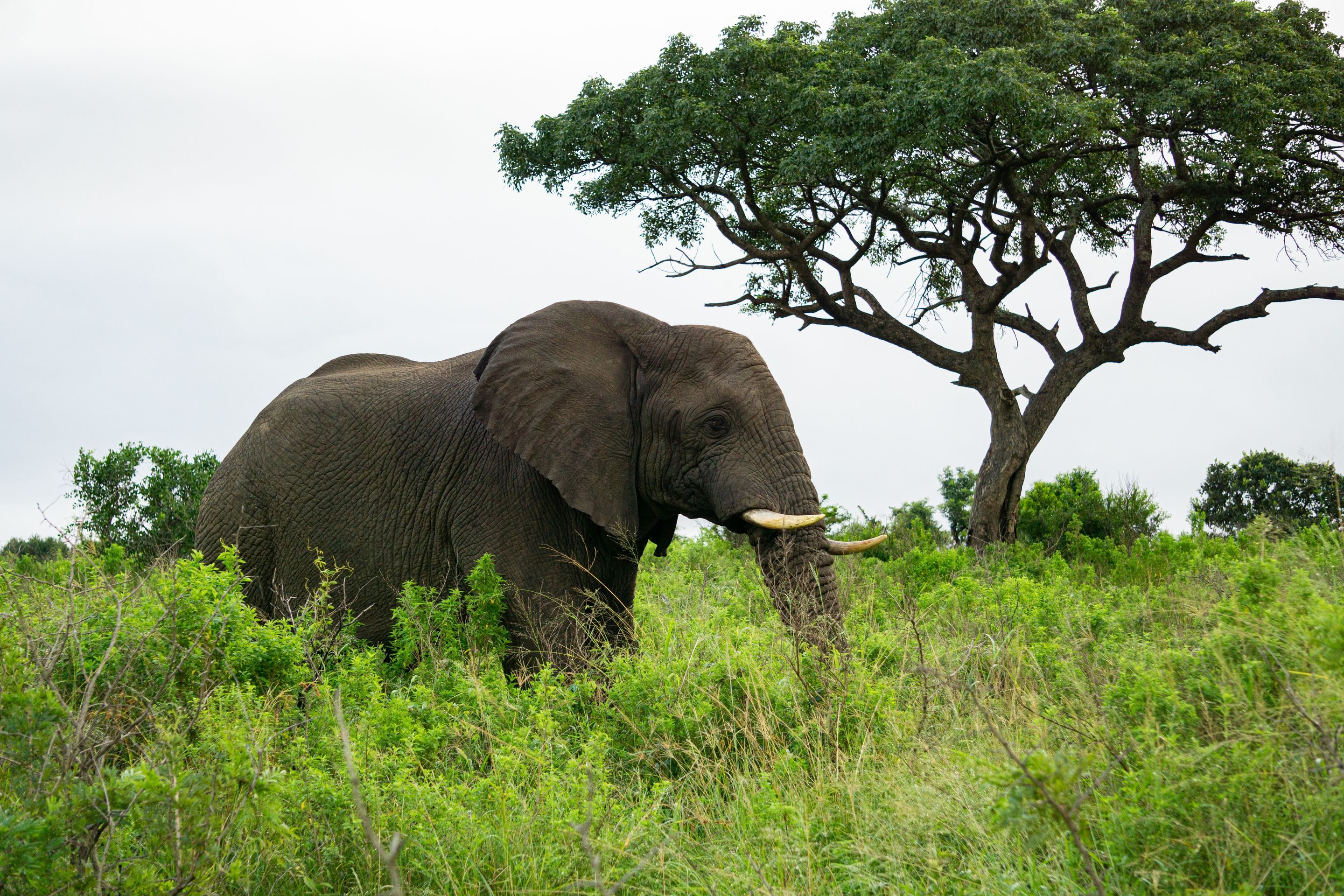
We continue through the beautiful, green, mountainous landscape, and suddenly our guide spots a black rhino and is very excited about it! Black rhinos are solitary and very rare. Lindo says he hasn't seen a single one on all his tours this year. They differ from white rhinos in that they have a slightly different head shape (black rhinos are pointed-mouthed) and instead of grazing, they nibble on leaves from trees and bushes.
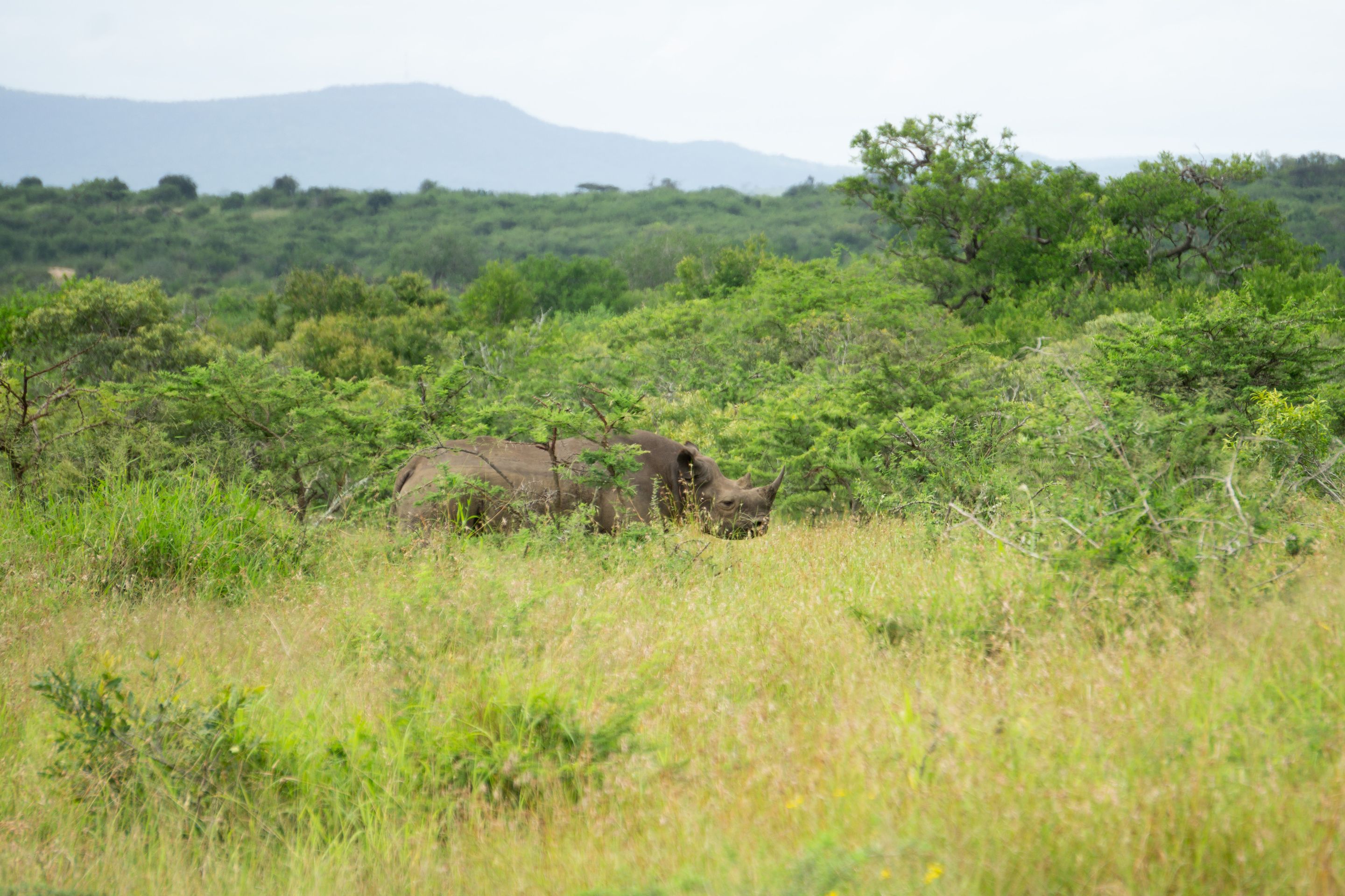
Then we receive a message from another group telling us that they have spotted lions at a certain spot. And indeed: a pride of about 25 lions (4 females and the rest are cubs of various ages) is lounging lazily in the shade between the trees. Only one slightly older lion cub enjoys the audience in the sun. The big males are probably out marking their territory and unfortunately not visible. So we have seen 4 out of the Big 5; I wonder if we will also see a leopard today?
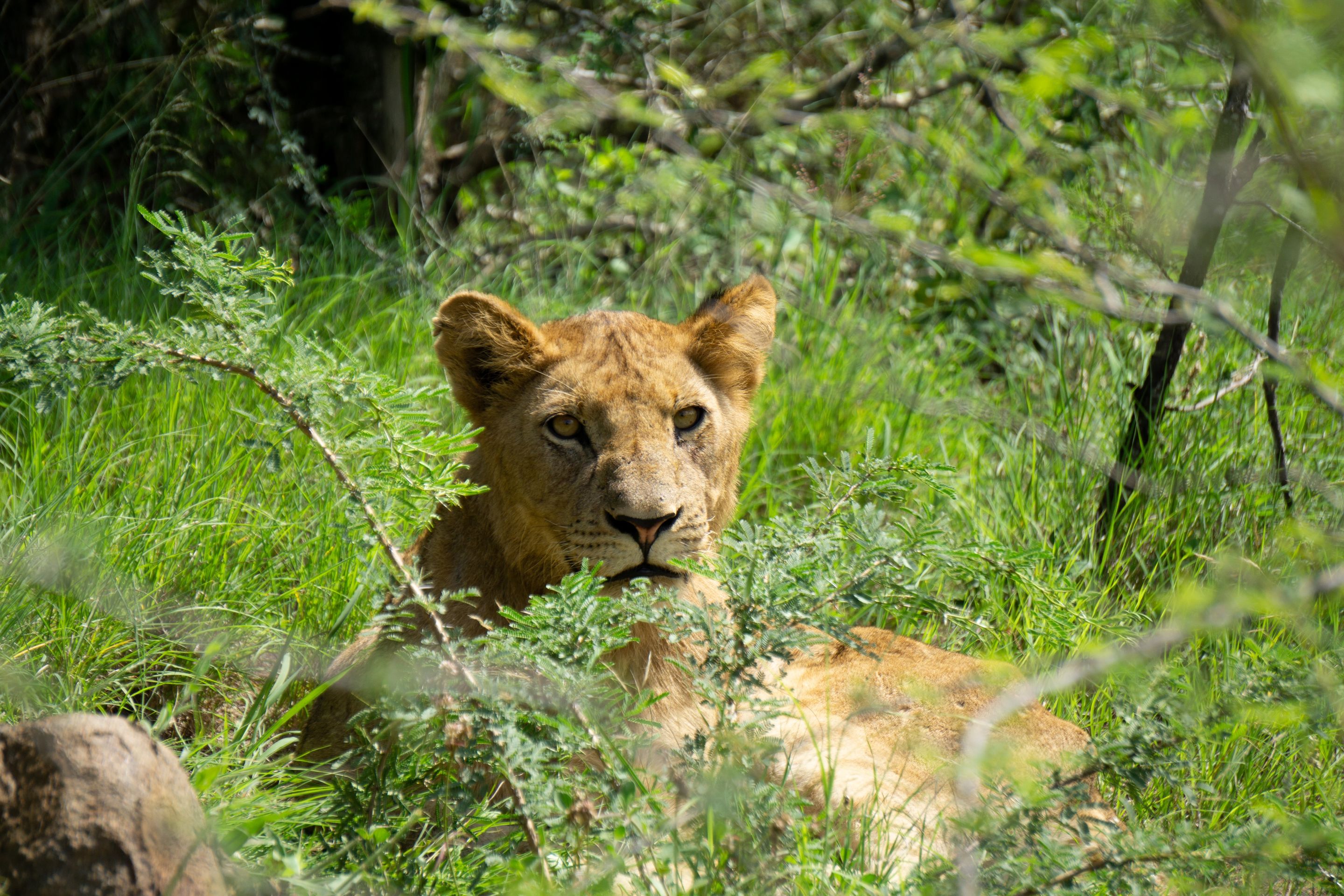
We have a barbecue lunch (called "braai" in Afrikaans) at a nearby camp and observe monkeys, impalas, and Pumbas on the premises. Then, on the slow journey back to the gate, we spot five white rhinos up close! One female has a huge horn and also has a slightly older small rhino in tow. Getting so close to these massive creatures is absolutely impressive! We observe them for a while and then move on.
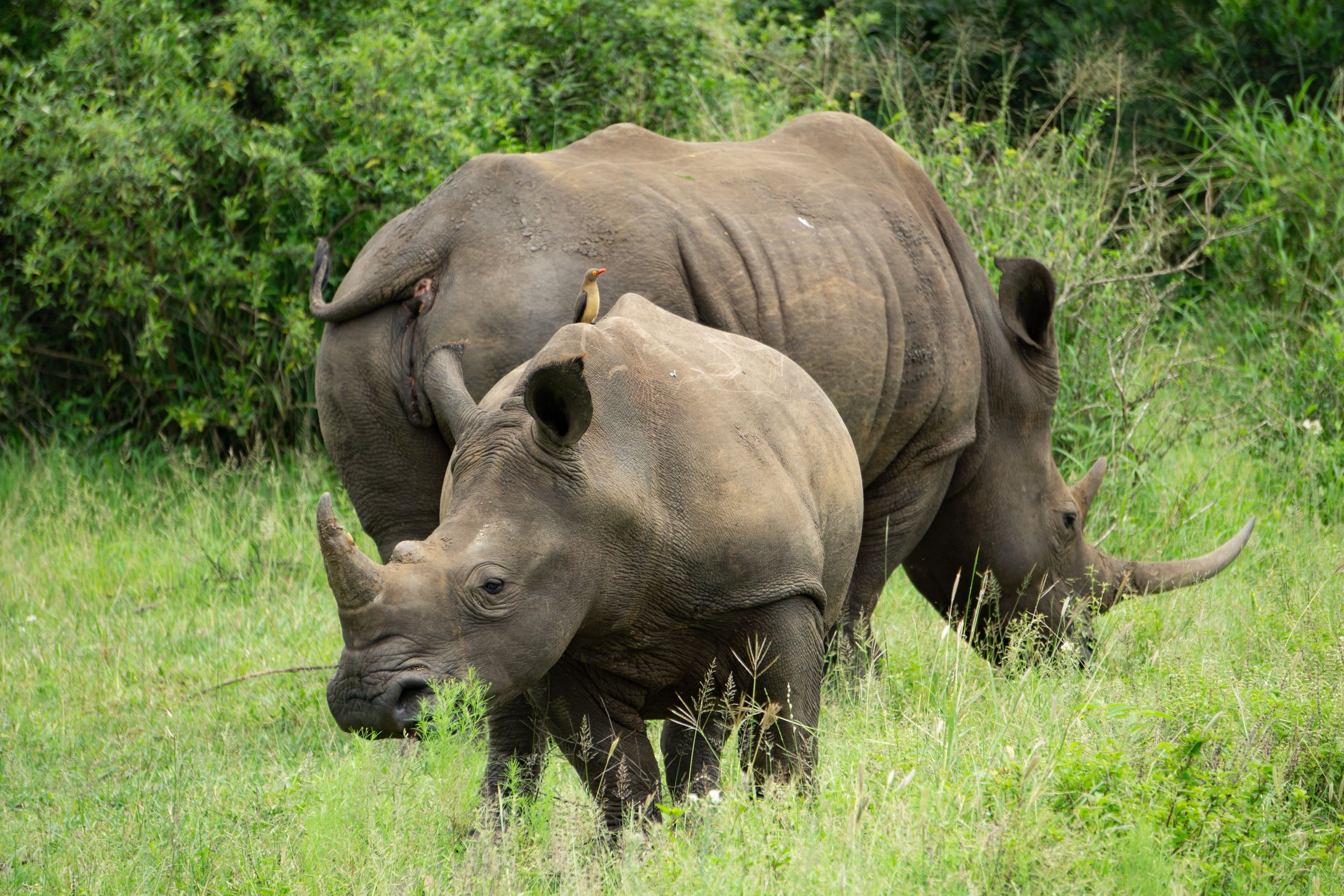
A few monkeys run across the roads in front of us or jump through the trees before we stop at a junction and can see about 50 yellow birds fluttering busily around a tree. Each of them is building a spherical nest hanging from thin branches. It almost looks like the tree is decorated with Christmas ornaments. A truly peculiar way to build a home.
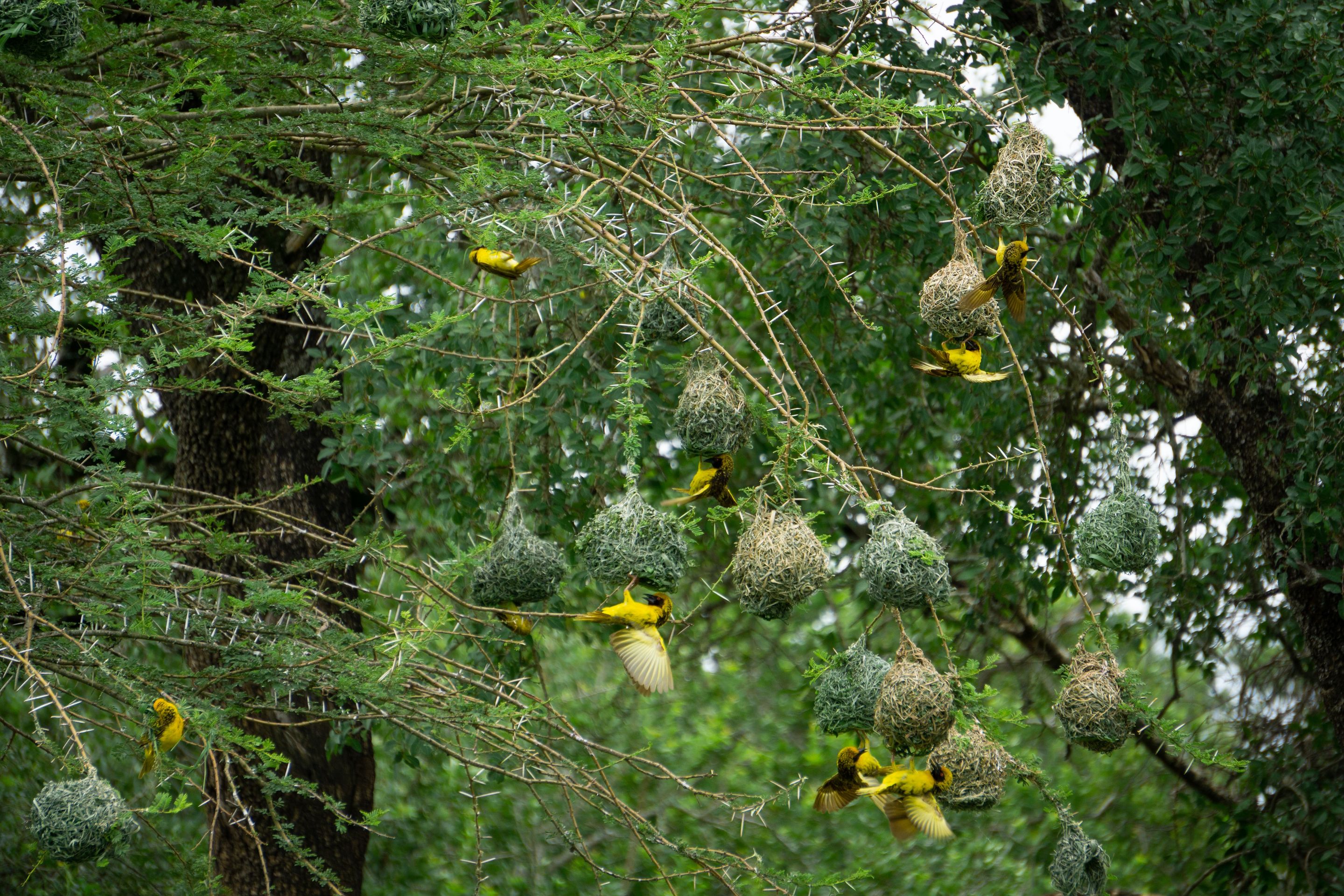
After spotting another giraffe among the treetops, we have already reached the gate to exit the park. We drive back to St. Lucia by jeep.
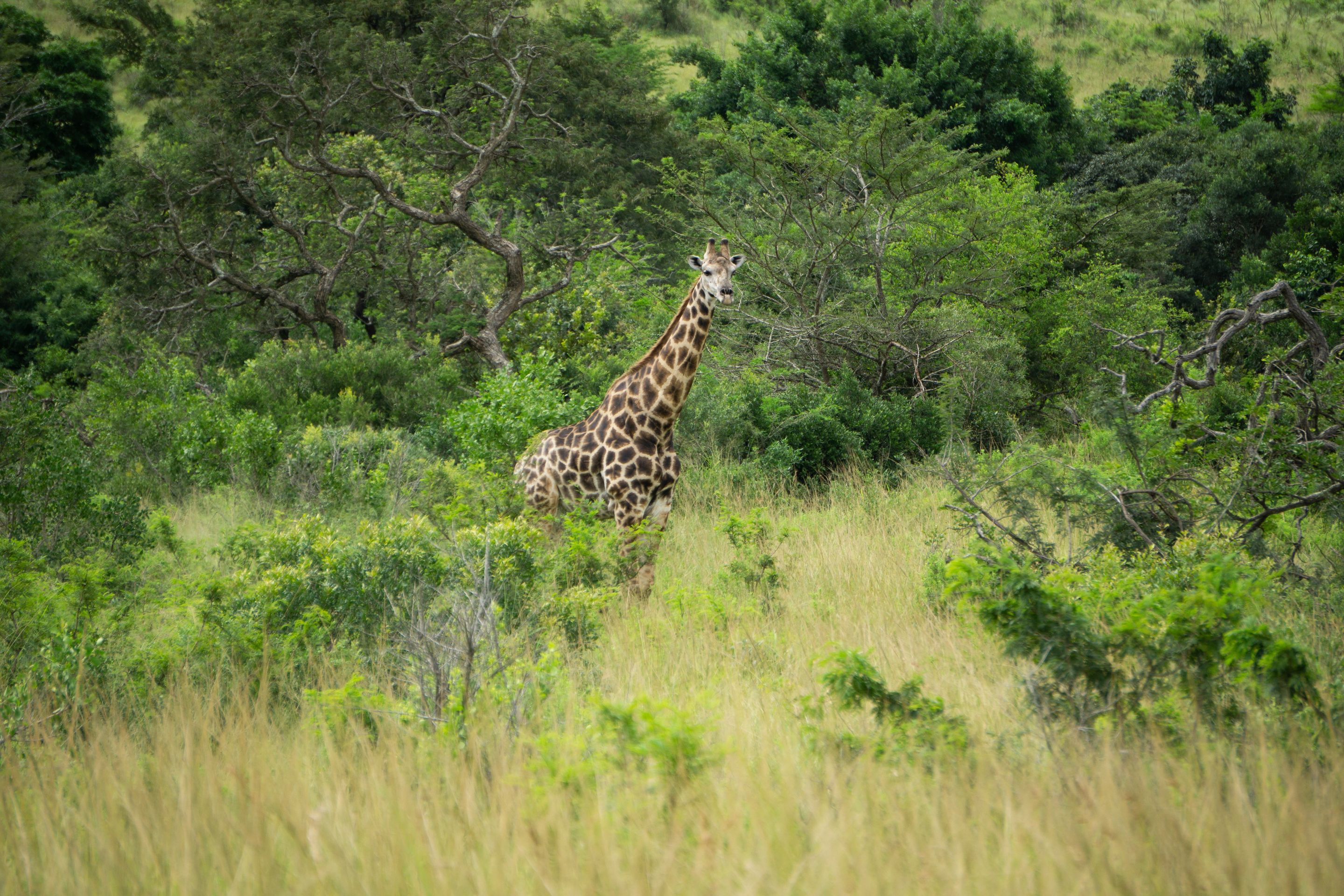
During dinner, we are treated to a traditional dance performance by some young street artists, accompanied by loud drummers.
It is now the 23rd of February, and we have been in South Africa for a week already - time for a safari on our own! We decide against the boat tour that is offered everywhere and drive our car to the entrance of the wetland park. For 160 Rand (about €8) per person, we are allowed to enter the gate and also receive a small map of the trails. Our goal today: to see hippos!
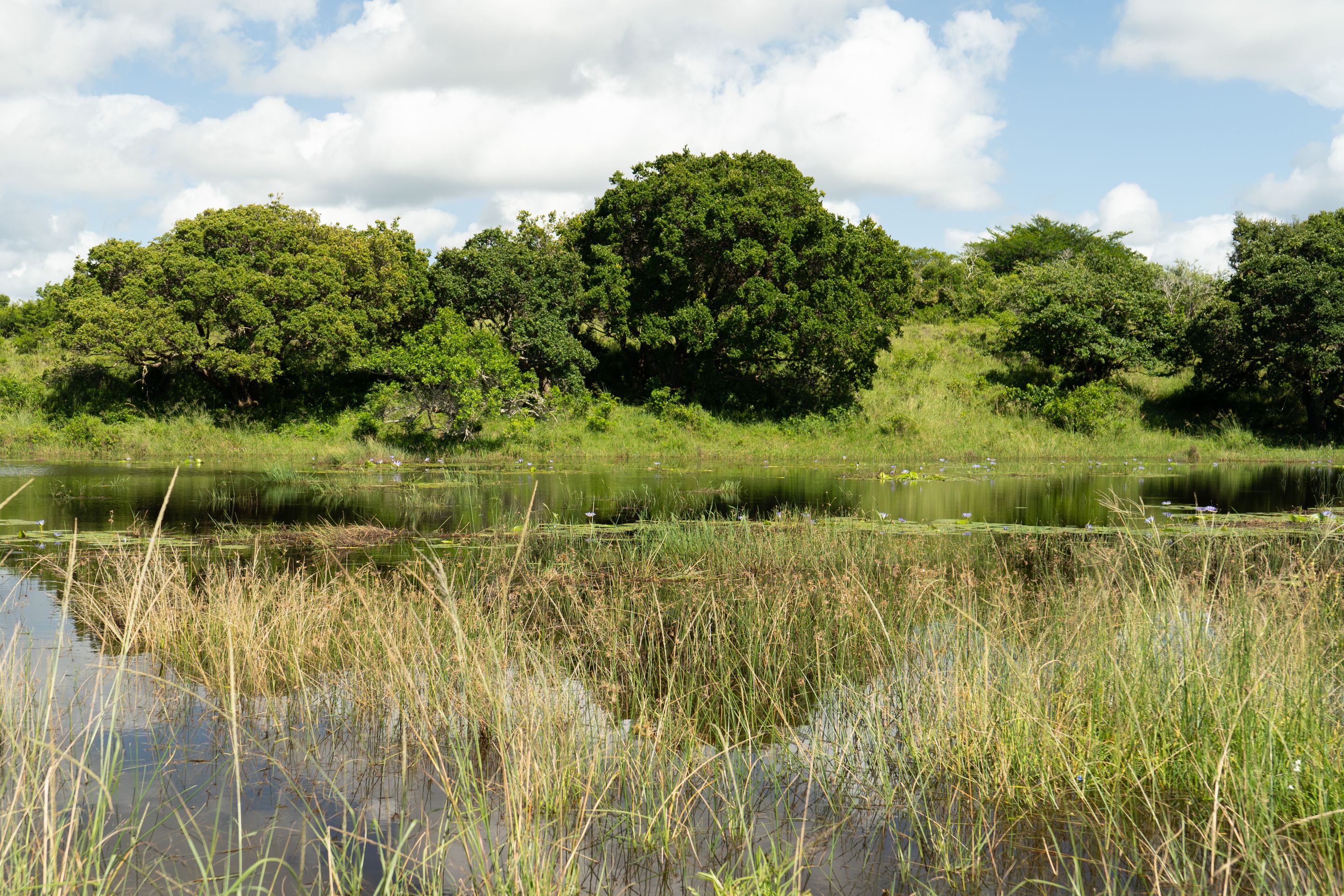
Initially, we drive on good tar roads through the grassy landscape and then decide to drive the suggested loops to discover more animals off the roads. However, one must always be aware that the muddy and gravel paths are not so easy to drive on... Let's just say, we wish we had a four-wheel-drive vehicle on this trip... But we don't.
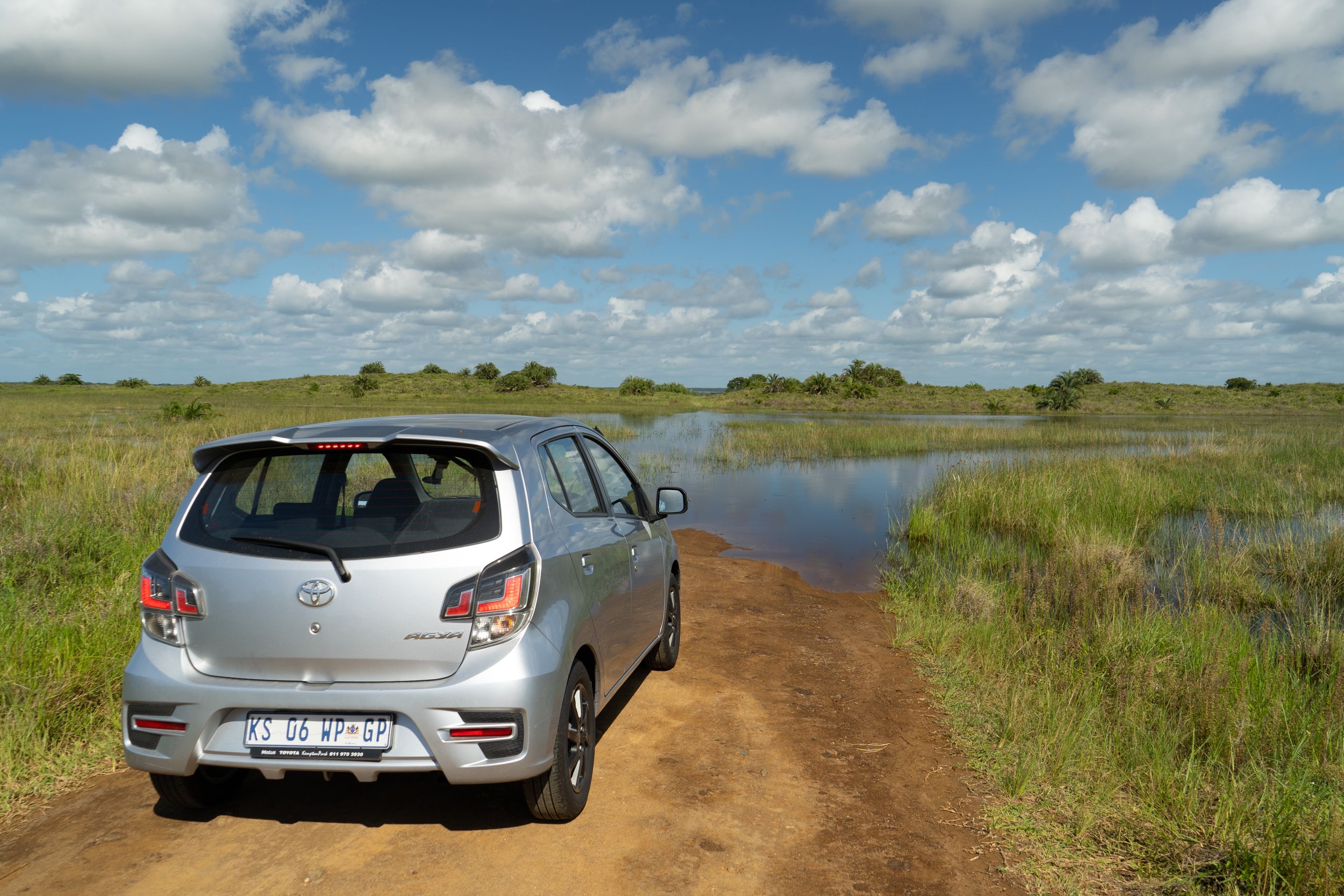
We encounter countless zebras again, some of which have young ones, water buffalo, various birds, monkeys, kudus, and impalas. But there is no sign of hippos, crocodiles, leopards, or lions (except on recently poured concrete slabs on footpaths).

At the end of our path, Cape Vidal awaits us; a long stretch of sandy beach in a bay. There aren't many visitors here, but the sun is scorching. Of course, we jump into the water, which is actually not particularly cold, but unfortunately not crystal clear and clean either. After an hour of sunbathing without a parasol, we decide to take a detour via the grassland loop on our way back.
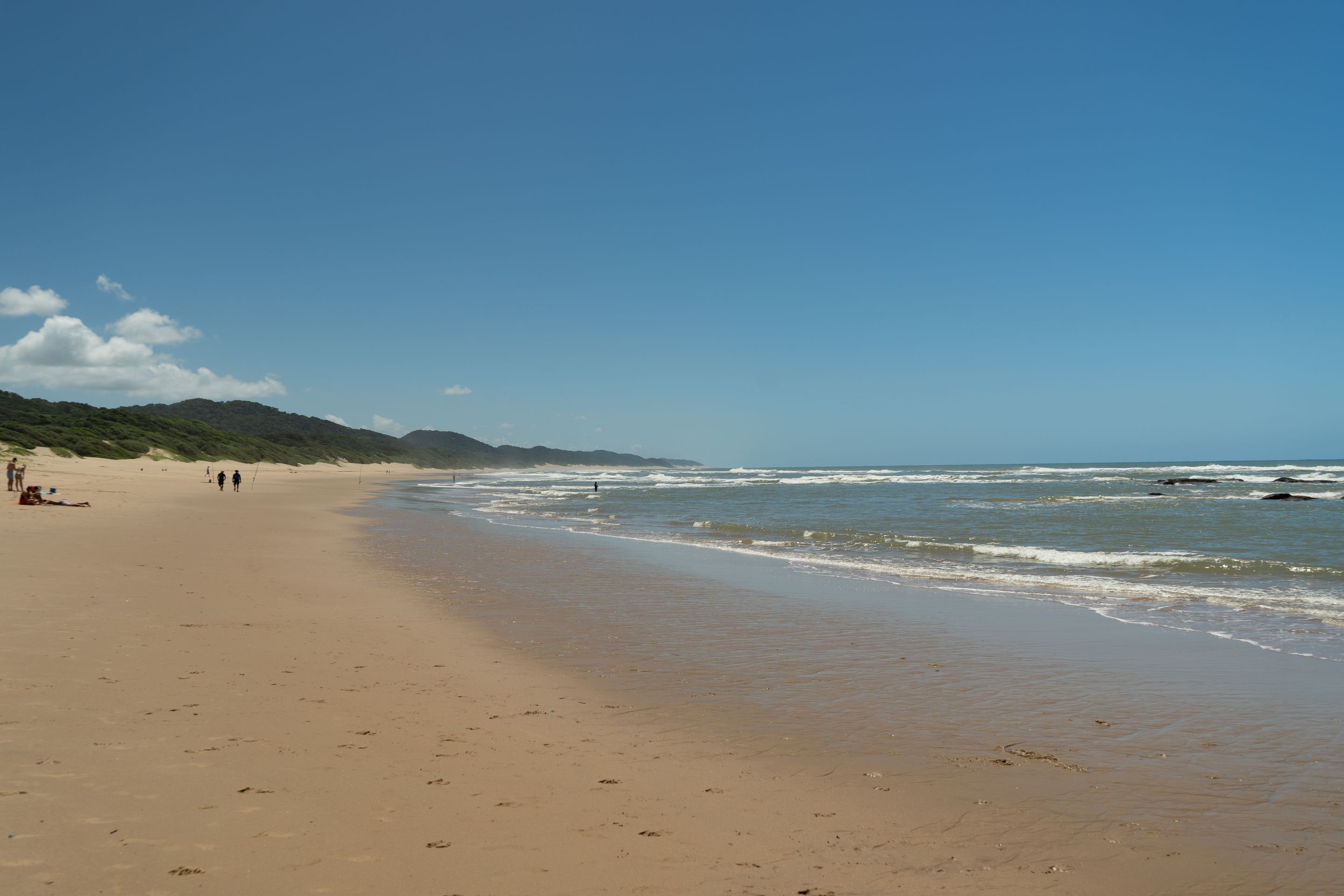
At a viewpoint, we leave the car and discover huge hippo footprints on the path. Well then, the big hippos can't be too far away, can they? We drive along the bumpy road and pass a huge lake. Beautiful, but no hippos in sight.
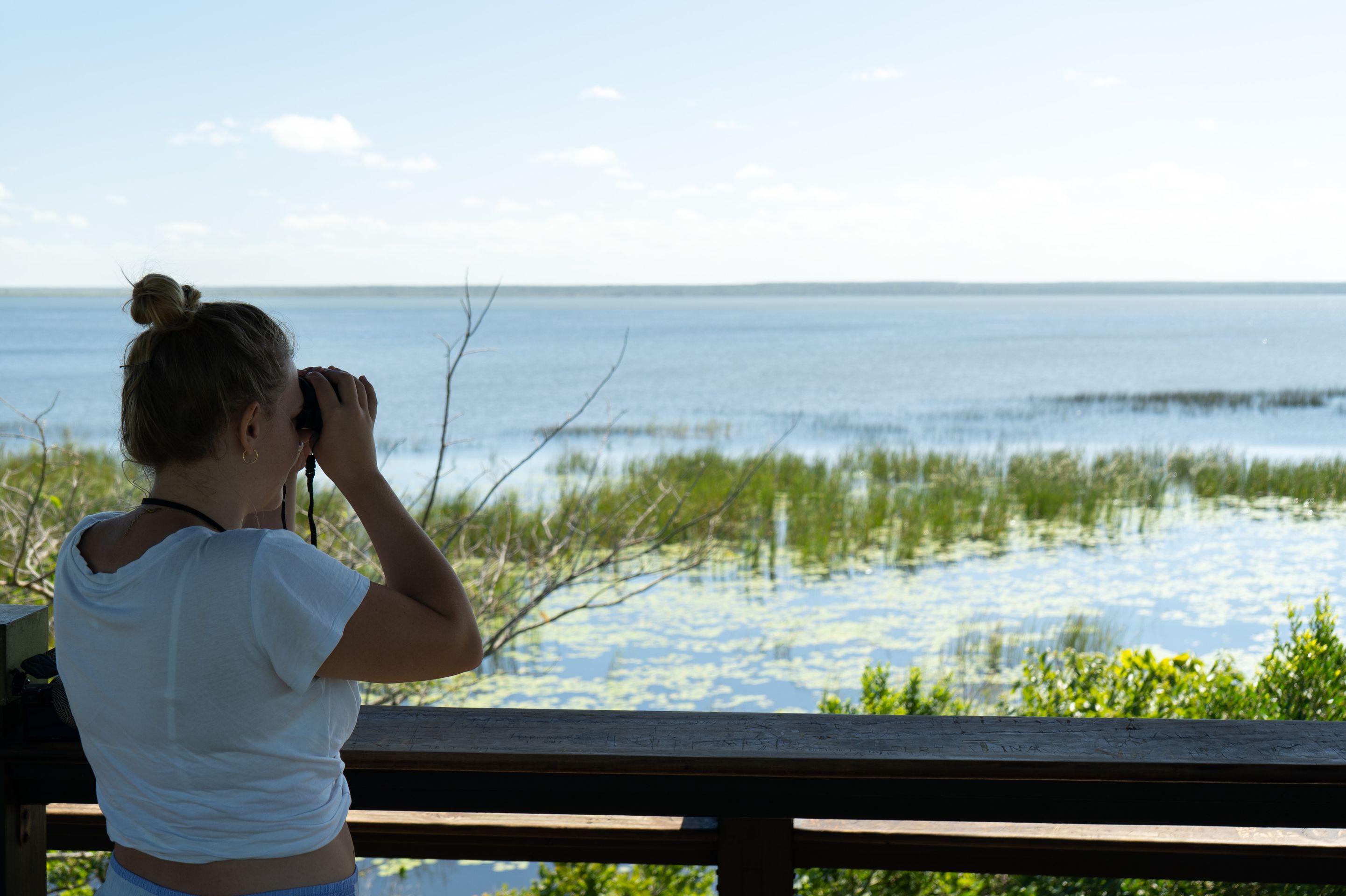
We continue to the next lake, and lo and behold: approximately eight hippos are lazing around in the water, watching us! We are so happy to have finally discovered some on our own. The day is saved!
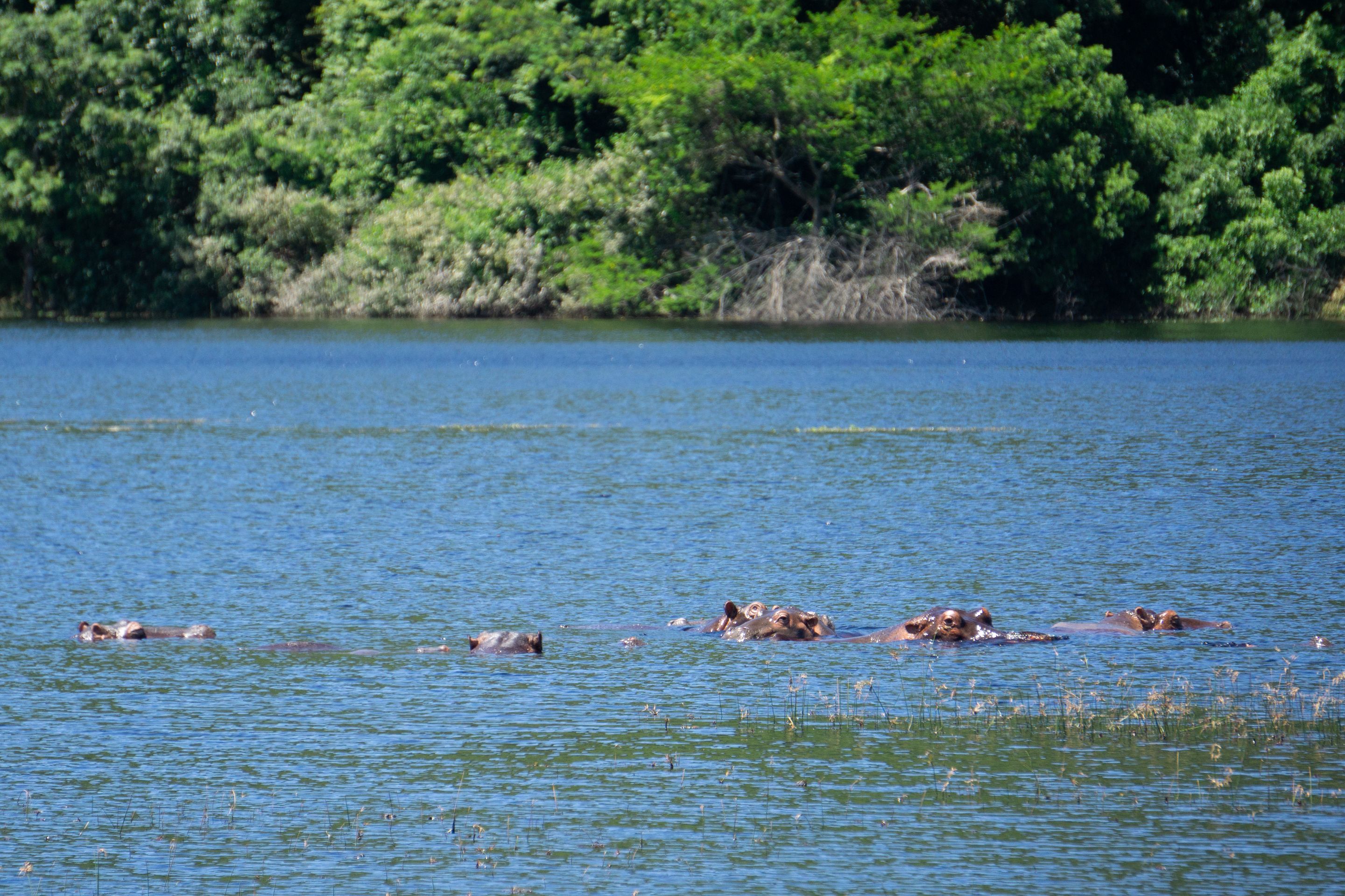
Carsten is already considering turning around because he doesn't want to put too much strain on our small rental car, but that's not possible because the road is only one-way. The grassland loop seems to go on forever, but we keep seeing water buffalo and zebras. And then suddenly, three grazing hippos on a meadow! Now you can really see how incredibly large these animals are... Impressive! However, they notice us and quickly disappear back into the water to "hide".
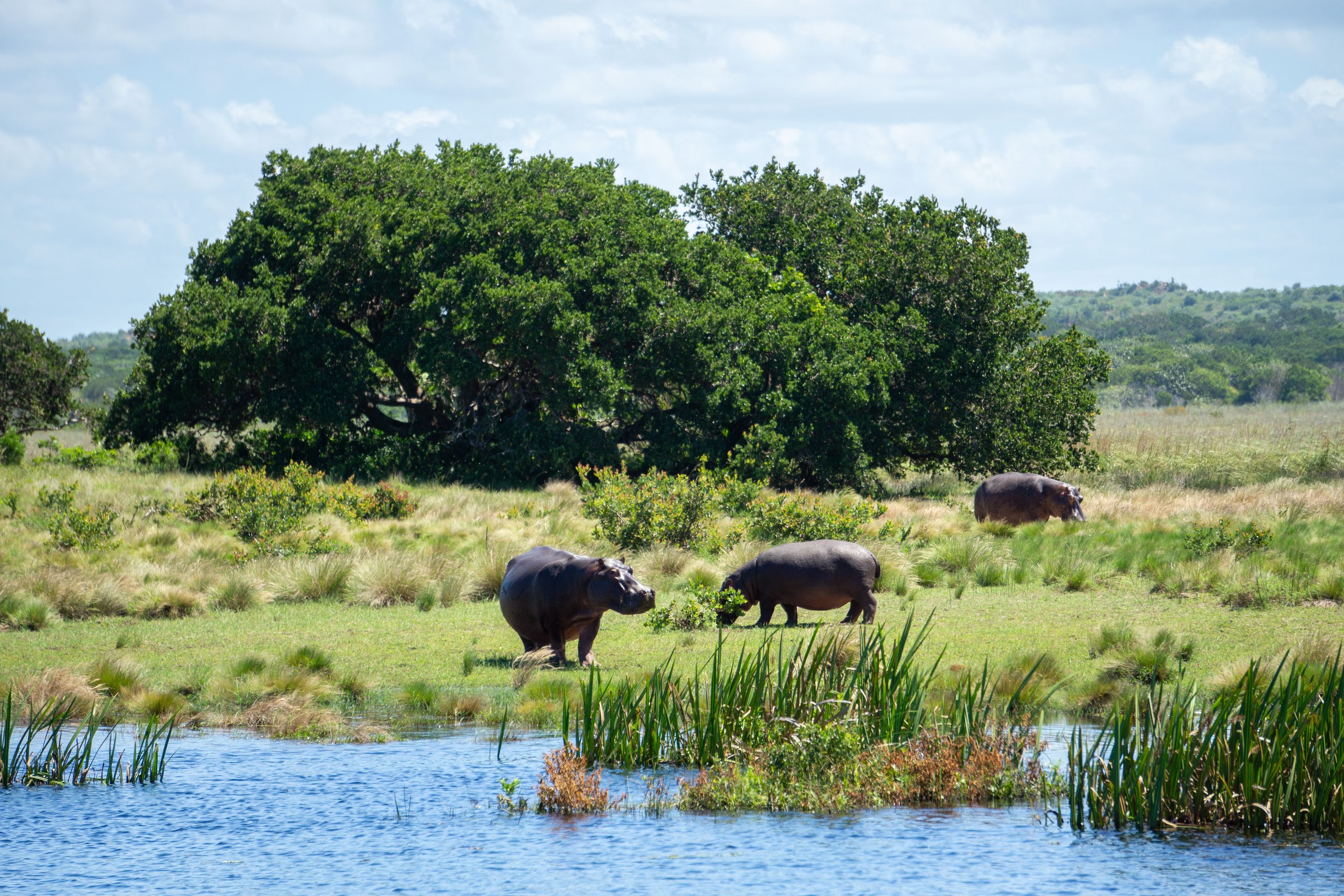
We continue through the grassland for a while until we reach the paved road again and slowly drive back. But hey, there wasn't any water on the road before, was there?! A section of the road is flooded with water for about 50 meters. We stand before it, at a loss. We let a jeep drive in front of us to see how deep the water is. The jeep passes through the water with no problem, but it is at least 30cm deep. It waits on the other side for us to see if we can make it with our tiny car. Do we have a choice? No. So we accelerate and hope that no water enters the car or that we get stuck... The water splashes up to our windows, but luckily we stay dry and make it to the other side safely 🙏
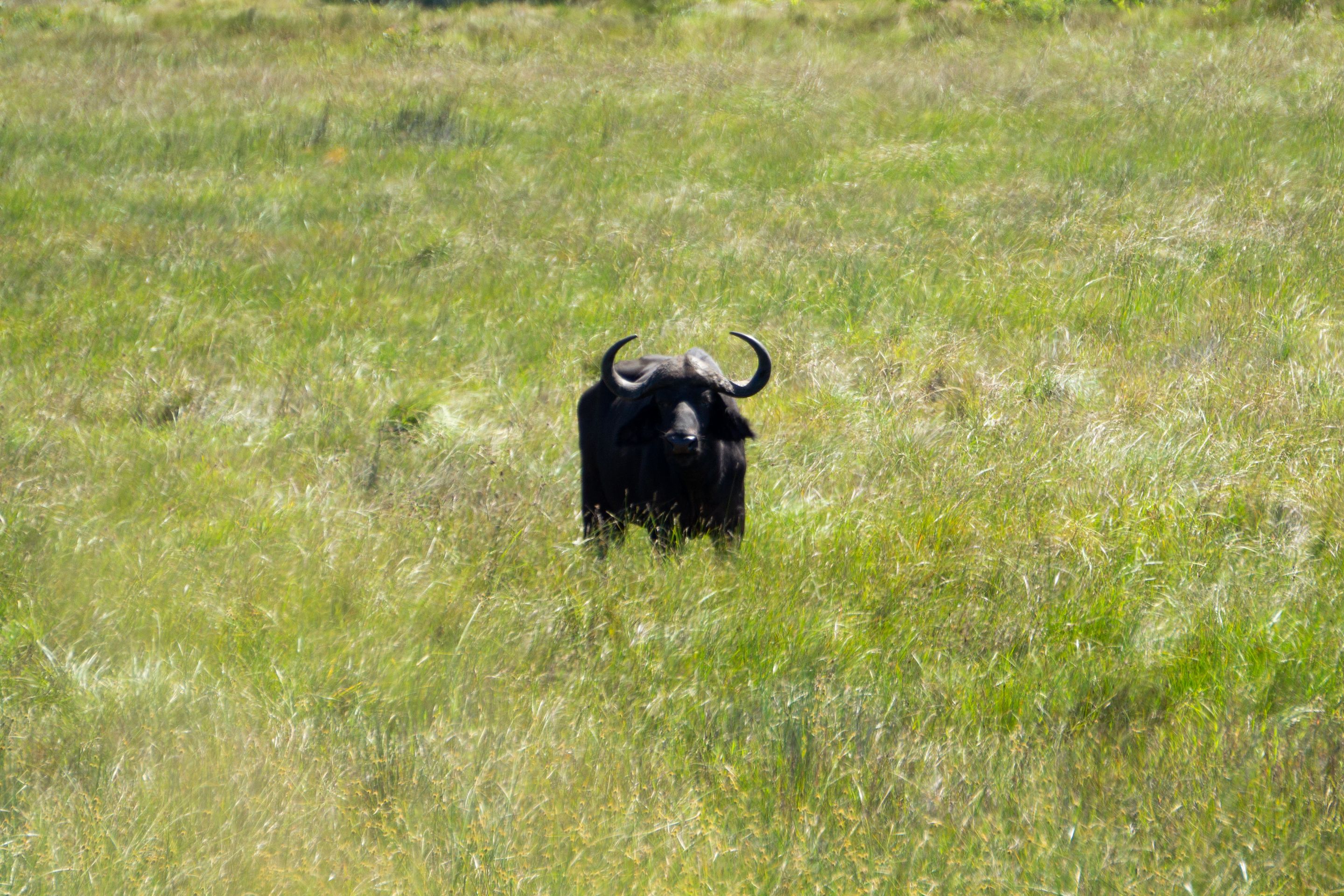
Except for leopards, we have seen almost everything there is to see in these two days, and we are absolutely impressed by the diversity of the animals that roam so majestically through the wilderness. Going out on our own and discovering the animals has been our favorite part because you never know what else you might see.
After a delicious farewell dinner in St. Lucia, we continue to Oribi National Park the next morning.
समाचार पत्रिका के लिए सदस्यता लें
उत्तर
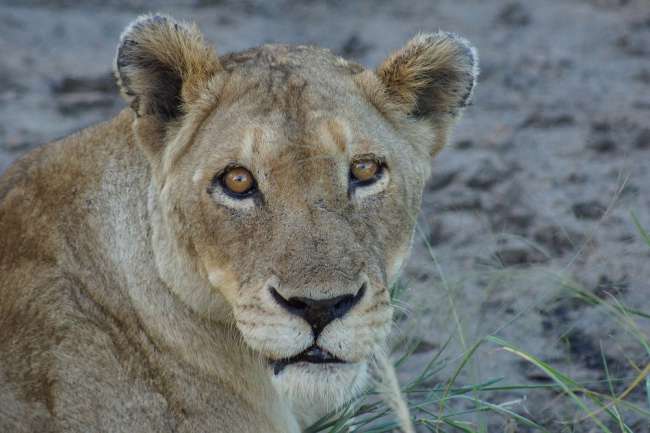
यात्रा रिपोर्ट दक्षिण अफ्रीका
